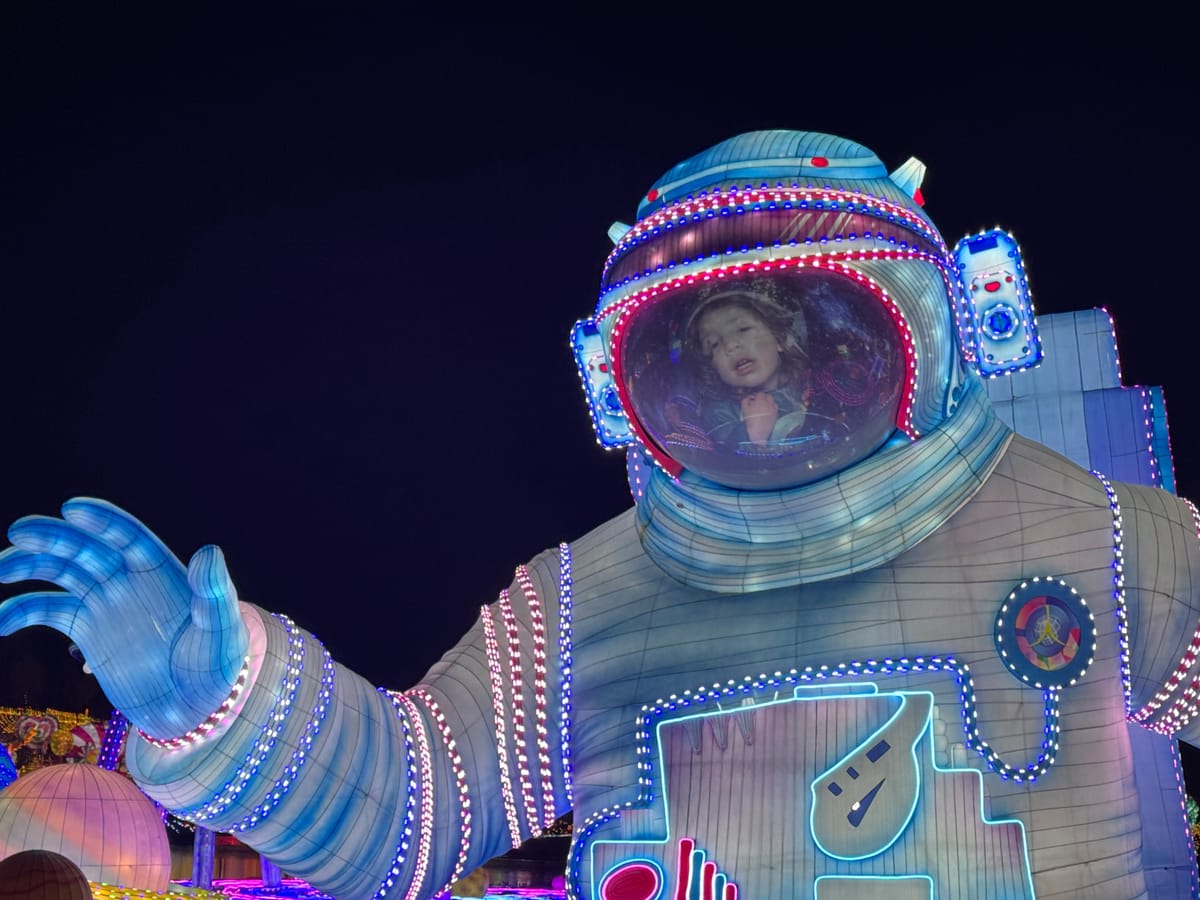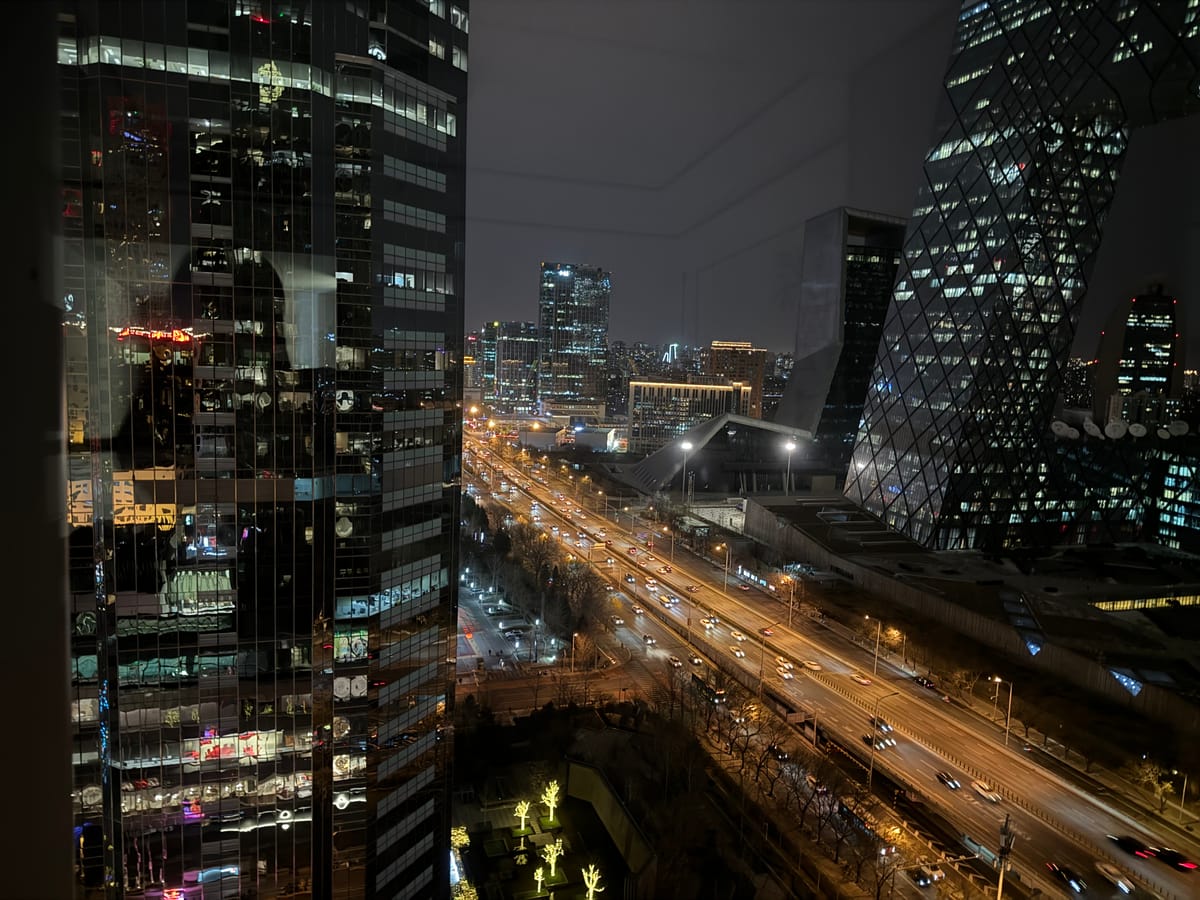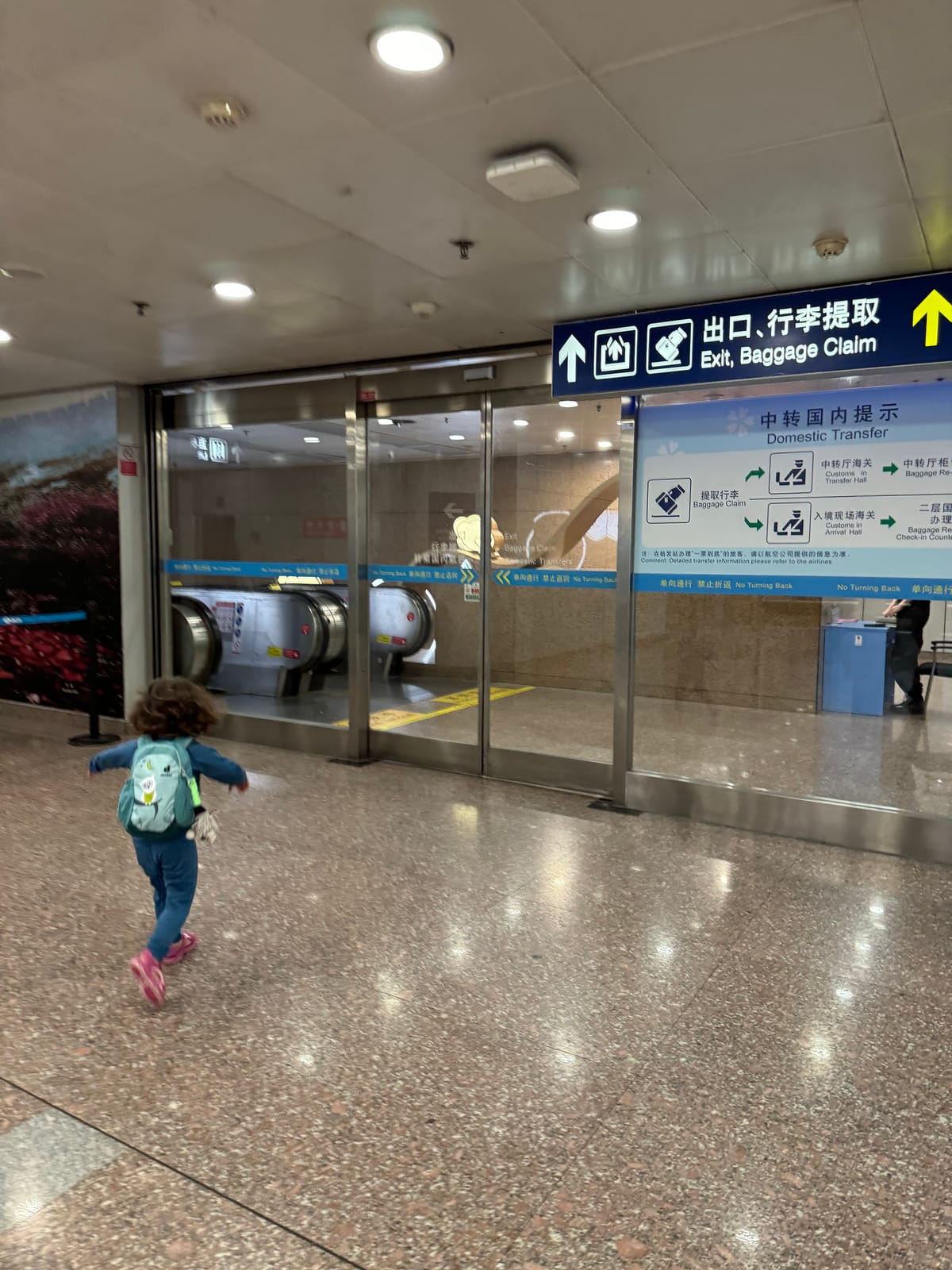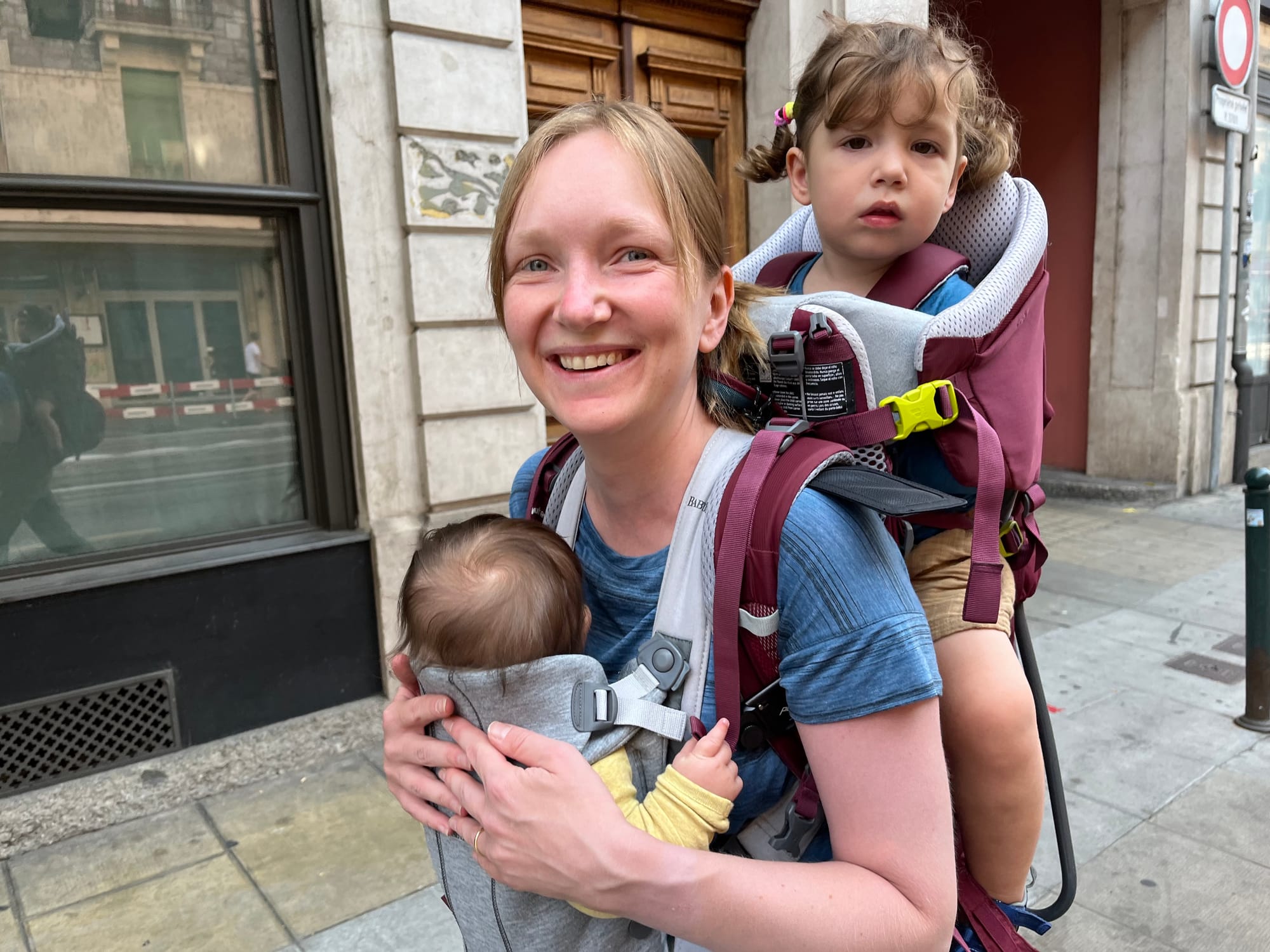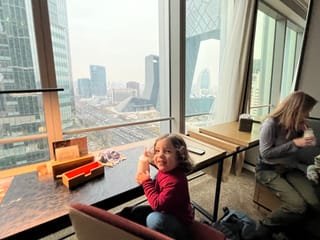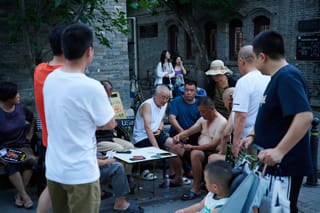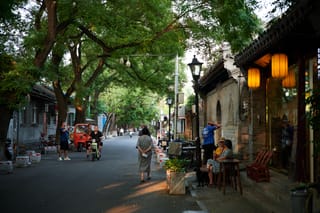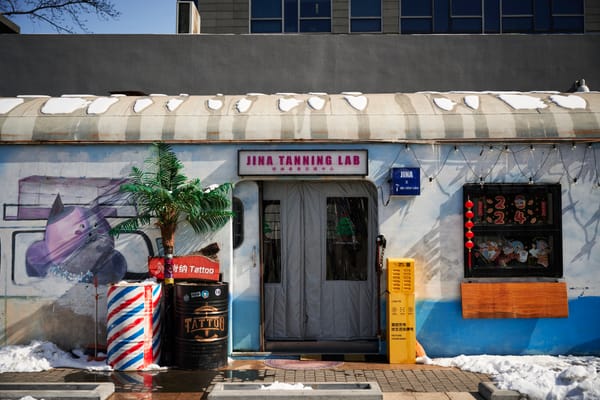
Best Things to Do in Beijing — Must-See Attractions & Local Favorites
Get to know Beijing beyond what the guidebooks show you
Share this post:
Introduction
There are many websites dedicated to listing top X attractions in any city in the world, and we are not negating the awe that visiting such places might inspire. However we have long been fans of more of a "live and breathe" approach - we like to walk the city, get lost in it and try to see whatever places the locals are hanging out.
From our experience while the tourist destinations might be impressive, they are usually not something you remember in years to come - it is those random discoveries you make along the way, people you meet and just fan casual memories that make you fall in love with the place.
We found that this attitude to travel is also the way to go when travelling with kids. It allows you to stop obsessing over ticking all the bucket list boxes (and being annoyed when the crankiness prevents you from getting there). Just 'hanging out' is much easier to do than 'touristing around' which is probably our trips with kids while not hassle-free, have similar amount of hassle as all other days of our parental life 😅.
In this post you can find the list of places in Beijing that we have found (so far) in China's bustling capital.
Going to Beijing? Find best hotels:
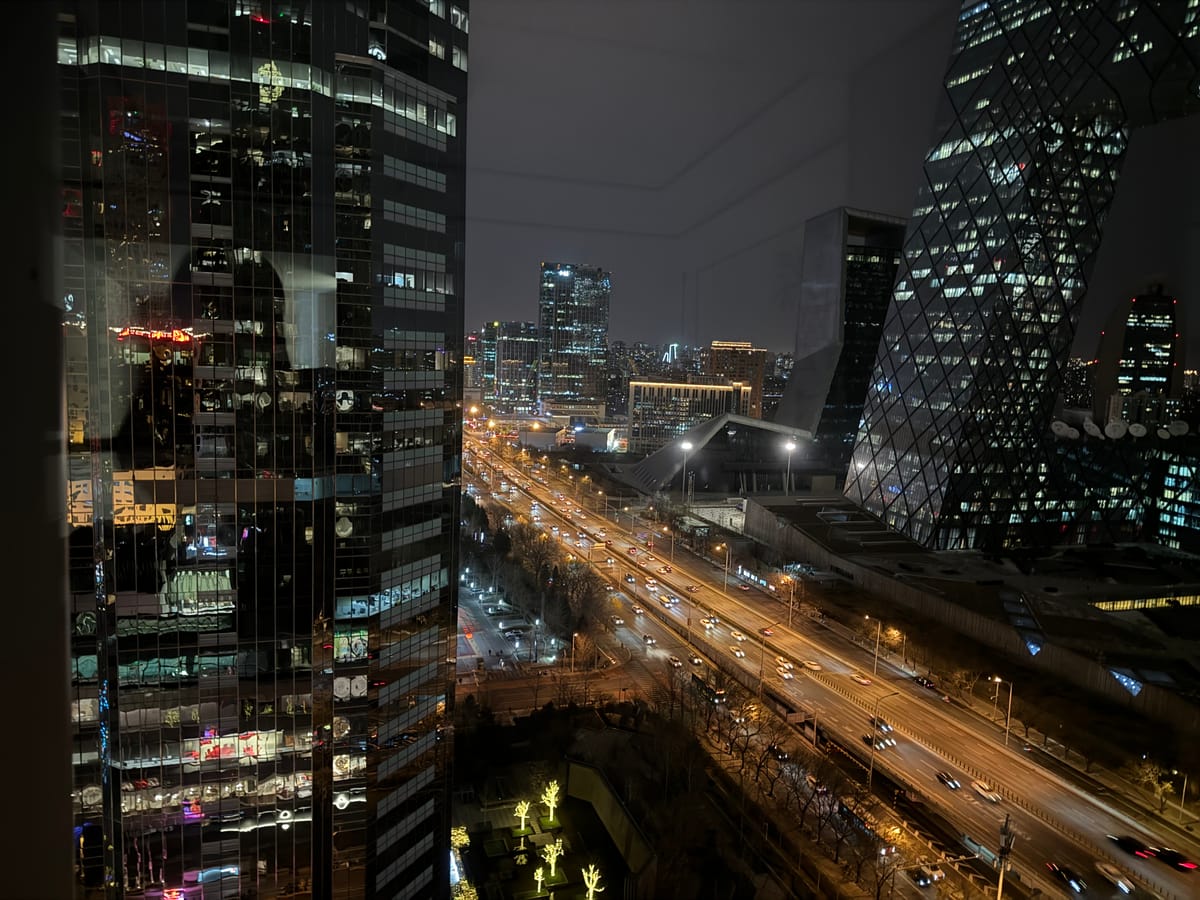
Beijing classics you don‘t want to miss
First of all, let me start with a confession — majority of those classics we HAVE skipped so far. We believe that travel is far more than a bucket list, but I also know that most people do want to see what the major attractions and get to know a bit the history of the places they visit.
Forbidden City (The Palace Museum)
The heart of imperial China and one of the most impressive palace complexes in the world. Walking through its vast courtyards and red-walled halls gives you a sense of the country’s ancient grandeur.
🌟Pro Tip: Pre-book tickets online, arrive early to beat the crowds, and climb nearby Jingshan Park afterward for a postcard-perfect view of the rooftops.
Jingshan Park viewpoint
Just north of the Forbidden City, this hilltop park offers one of the best panoramic views in Beijing. The climb takes only a few minutes, but the reward is seeing the golden rooftops of the palace stretch out beneath you — especially stunning at sunset.
If you don‘t find time to visit Forbidden City itself (like us), it is a perfect opportunity to catch the glimpse of it.
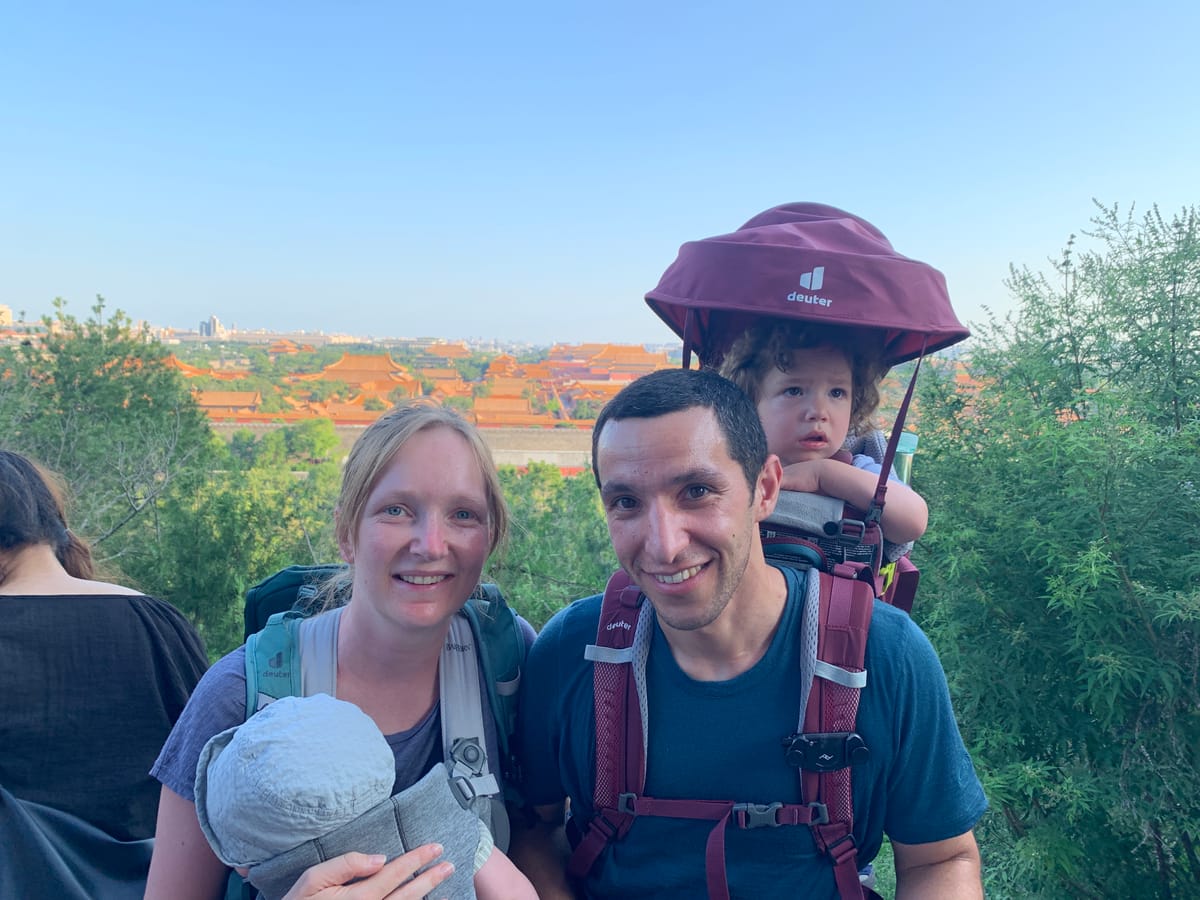
Tian’anmen Square
Just outside the Forbidden City, this immense square is both symbolic and emotional — the political heart of modern China. Watching the flag-raising ceremony at sunrise is a powerful experience. Security is strict, so bring your passport and expect a bag check.
Temple of Heaven
A masterpiece of Ming-era architecture surrounded by a vast park where locals practice tai chi and dance in the mornings. The temple’s perfect symmetry and vibrant blue tiles make it one of Beijing’s most photogenic sights.
Don’t miss: The early-morning local life in the park — it’s half the magic. Take a stroll through the side alleys to see people dance, practice tai chi and socialise.
Summer Palace
A sprawling complex of lakes, gardens, and palaces that once served as the emperors’ summer retreat. You can stroll along covered walkways, take a boat across Kunming Lake, and climb Longevity Hill for sweeping views.
🌟 Pro Tip: Visit in late afternoon for soft light and cooler air; it’s one of the most peaceful times to go.
Walk Through History in Beijing’s Hutongs
If the Forbidden City shows Beijing’s imperial side, the hutongs reveal its soul.
These narrow alleyways lined with grey-brick courtyards are where everyday life has unfolded for centuries.
Wandering through them feels like stepping into living history — a maze of old homes, tiny temples, hole-in-the-wall cafés, and shopfronts where neighbors still chat across their doorways.
Today the hutongs are evolving — many being gentrified, revealing a fascinating picture of a city (and a country) in transformation.
Nanluoguxiang
One of the most famous hutongs, and for good reason — it’s a perfect blend of old and new Beijing. The street is lined with boutiques, cafés, and snack stalls, yet still keeps its traditional architecture.
Tip: Go early in the morning or late evening to avoid the crowds, then wander off into the quieter side alleys for the real charm.
Yandai Xiejie & Shichahai Lakes
This area, near Houhai, is lovely for a half-day walk. You’ll pass restored old homes, lakeside teahouses, and tiny bridges. Rent a paddleboat or simply stroll the lakes in the evening when the reflections of the lights shimmer on the water.
Dashilar & Dazhalan
South of Tian’anmen Square lies one of the oldest commercial areas in Beijing. Here, century-old shops sell Chinese medicine, silk, and traditional crafts. Dashilar feels more local and less polished — a great contrast to the northern hutongs.
Tip: Look up at the old wooden façades; many date back to the Qing dynasty.
Best Hutong Walks & Hidden Spots
If you want to experience hutongs beyond the tourist stretch, head towards Xisi, Baochao Hutong, or the alleys around Beixinqiao. We stayed in a hotel in Xisi hutong the first time we visited Beijing and there you can still wander around feeling like you are visitng old Beijing.
You’ll find local breakfast stalls, tiny shops, and even modern design cafés tucked into grey-brick courtyards.
Exploring hutongs is best done slowly and without a plan — let yourself get lost. It’s where you’ll see Beijing at its most human scale.
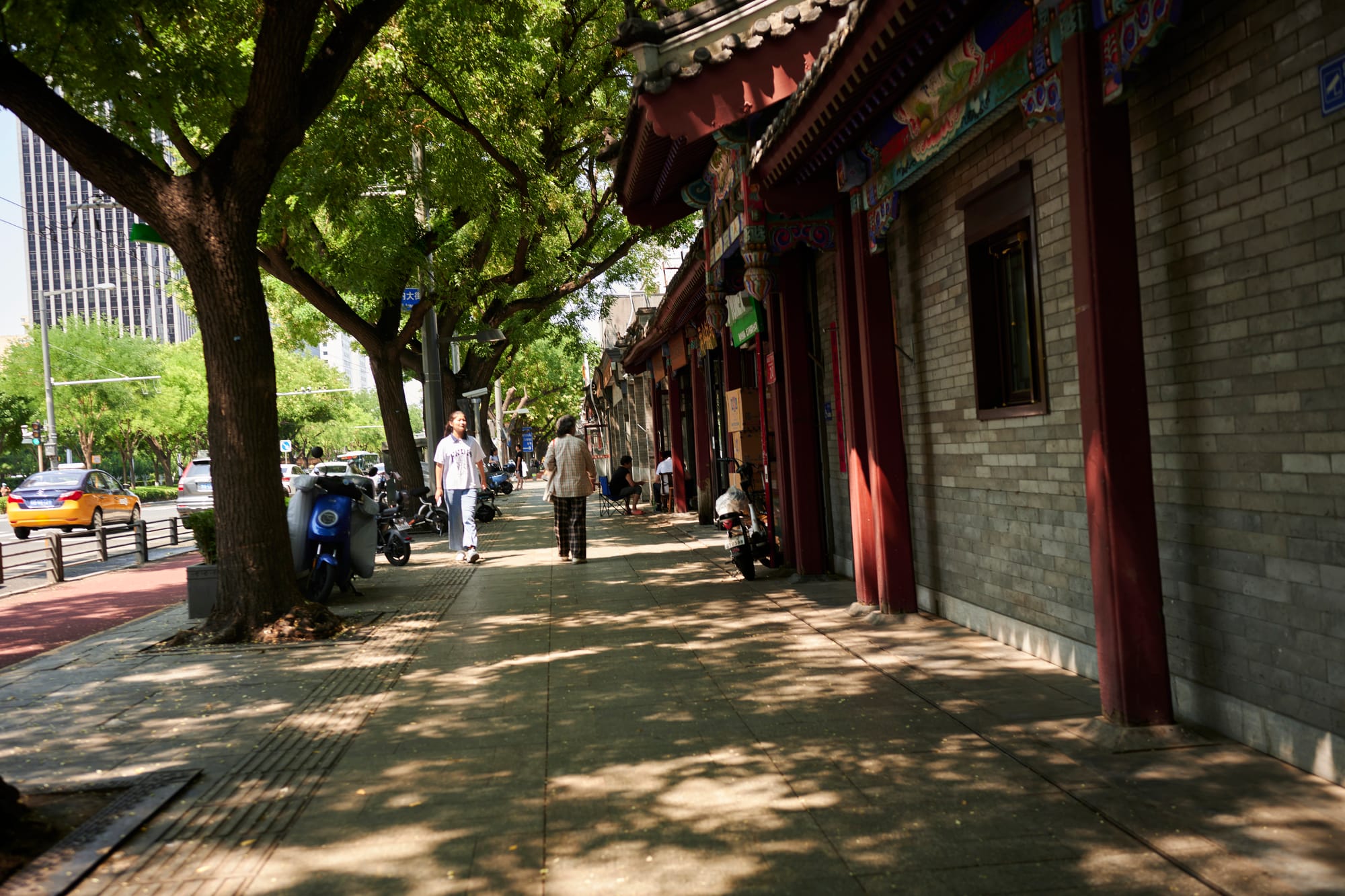
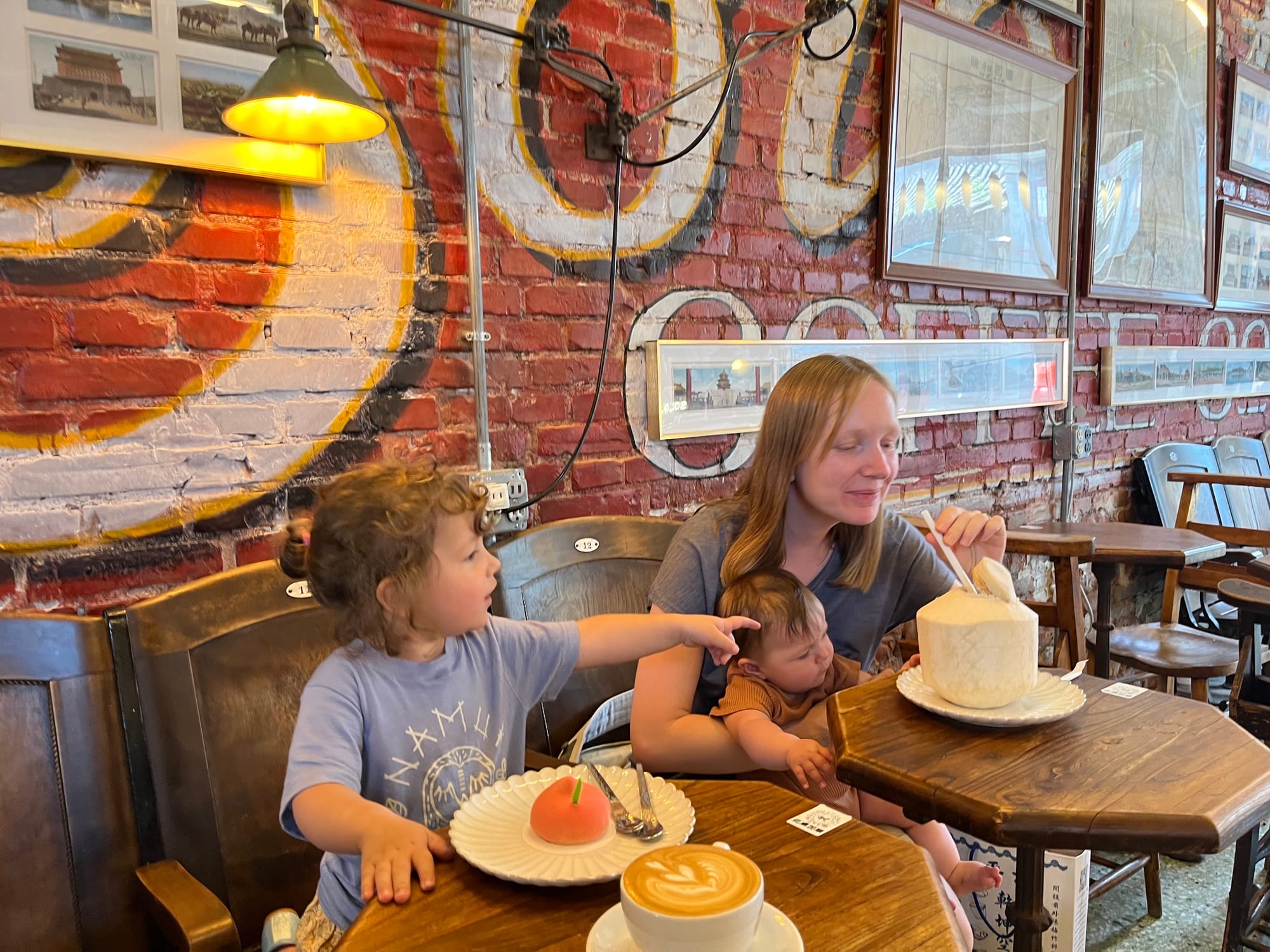
Art and Modern Culture in Beijing
798 Art District
798 Art District is an old industrial district turned cool artsy hangout. It is pleasant to just wander around there and a home of world-class art galleries and cool local designer shops.
Unlike many other places in Beijing, you can hear a lot of English spoken there. And it feels much more cosmopolitan too, with many cool cafes and eateries.
To read more about 798 Art District:


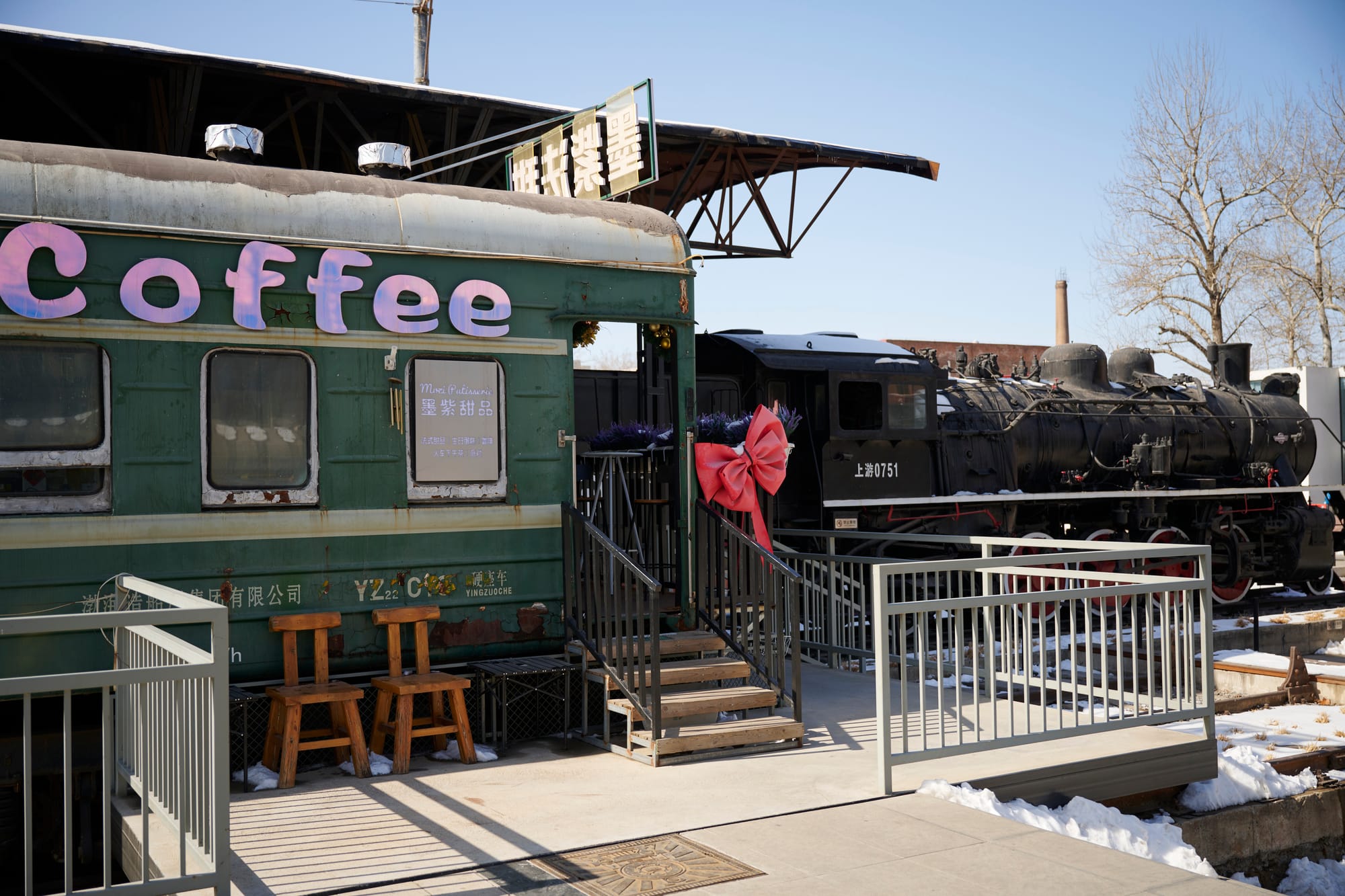
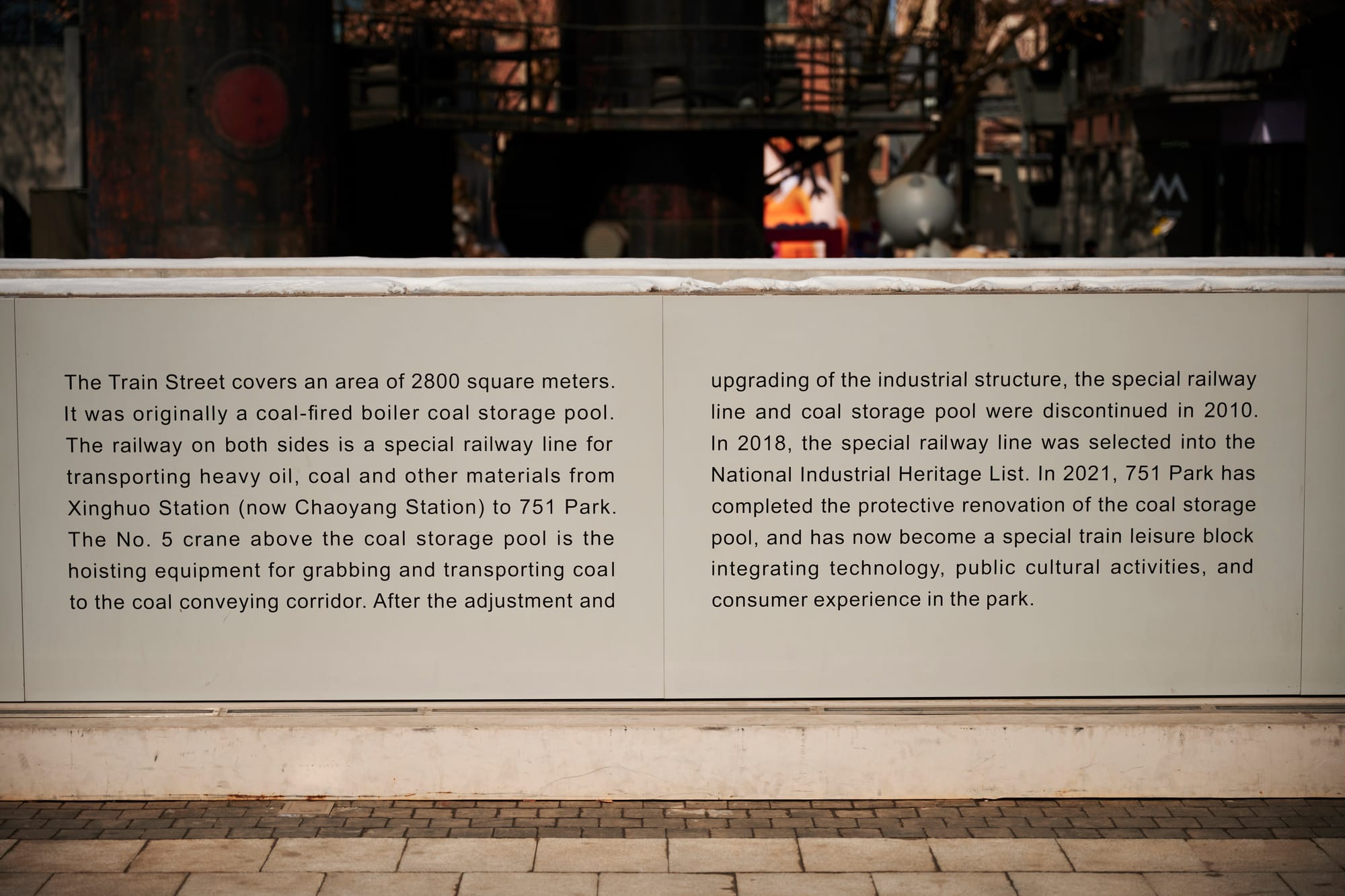
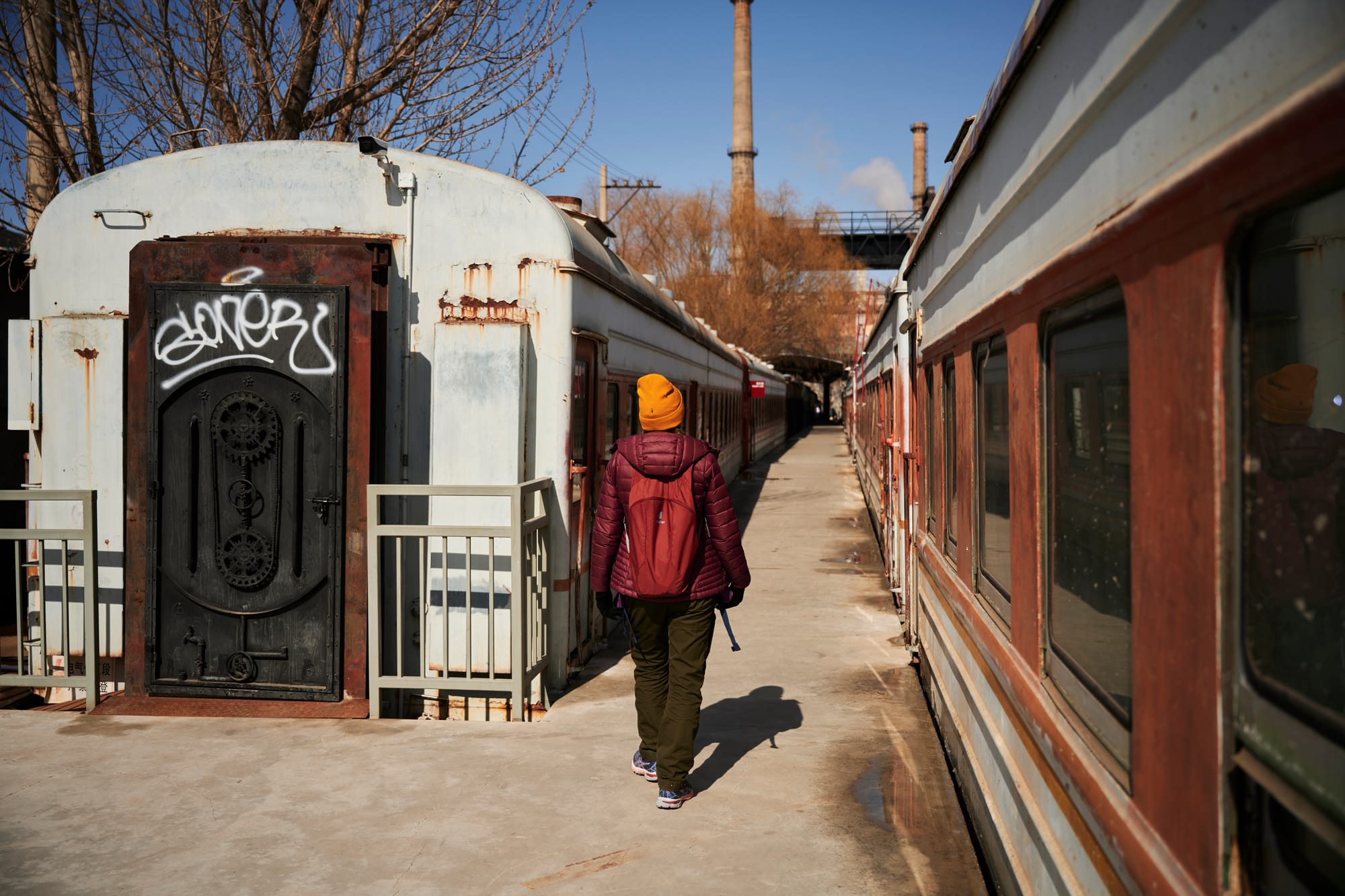
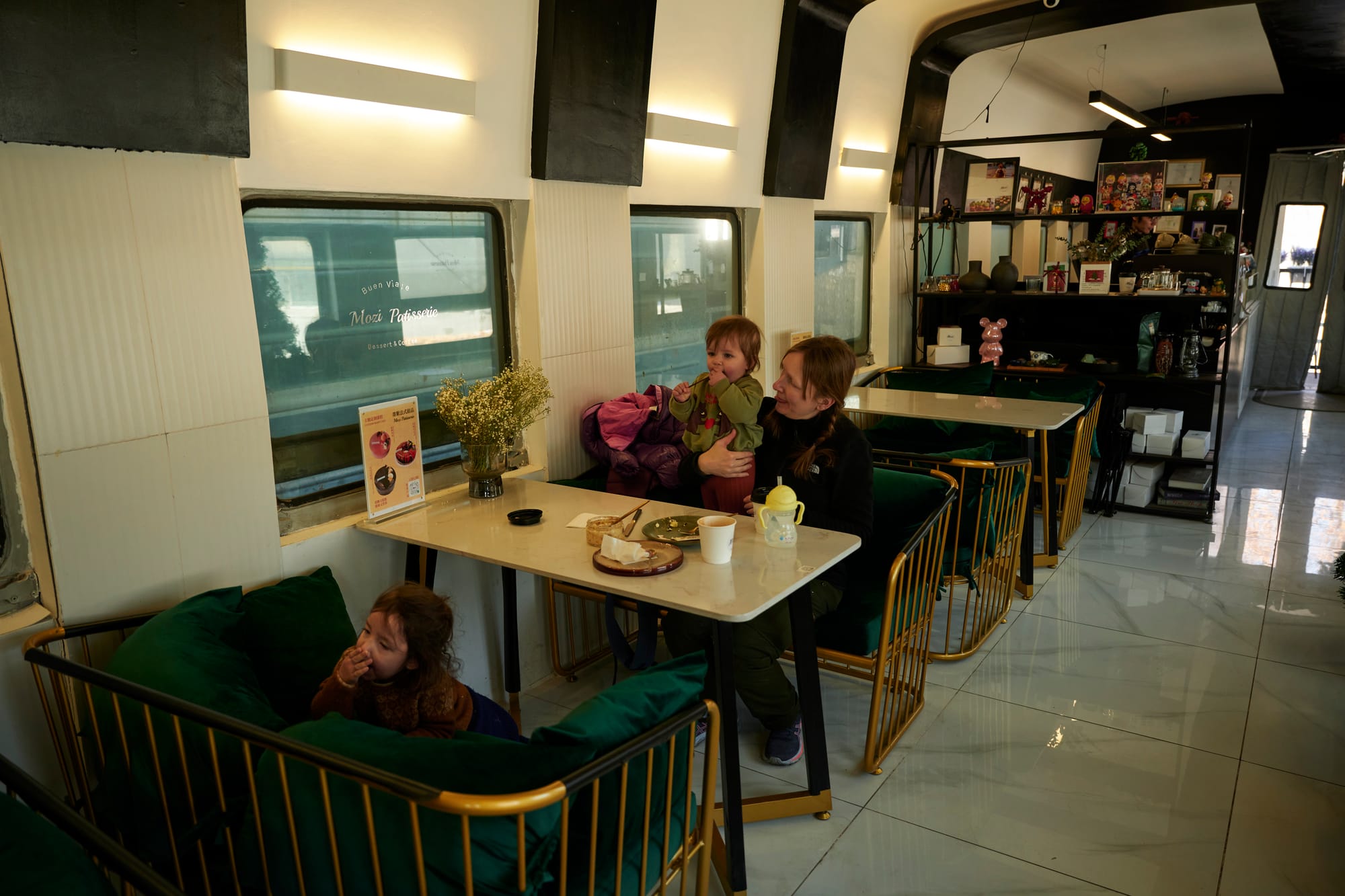
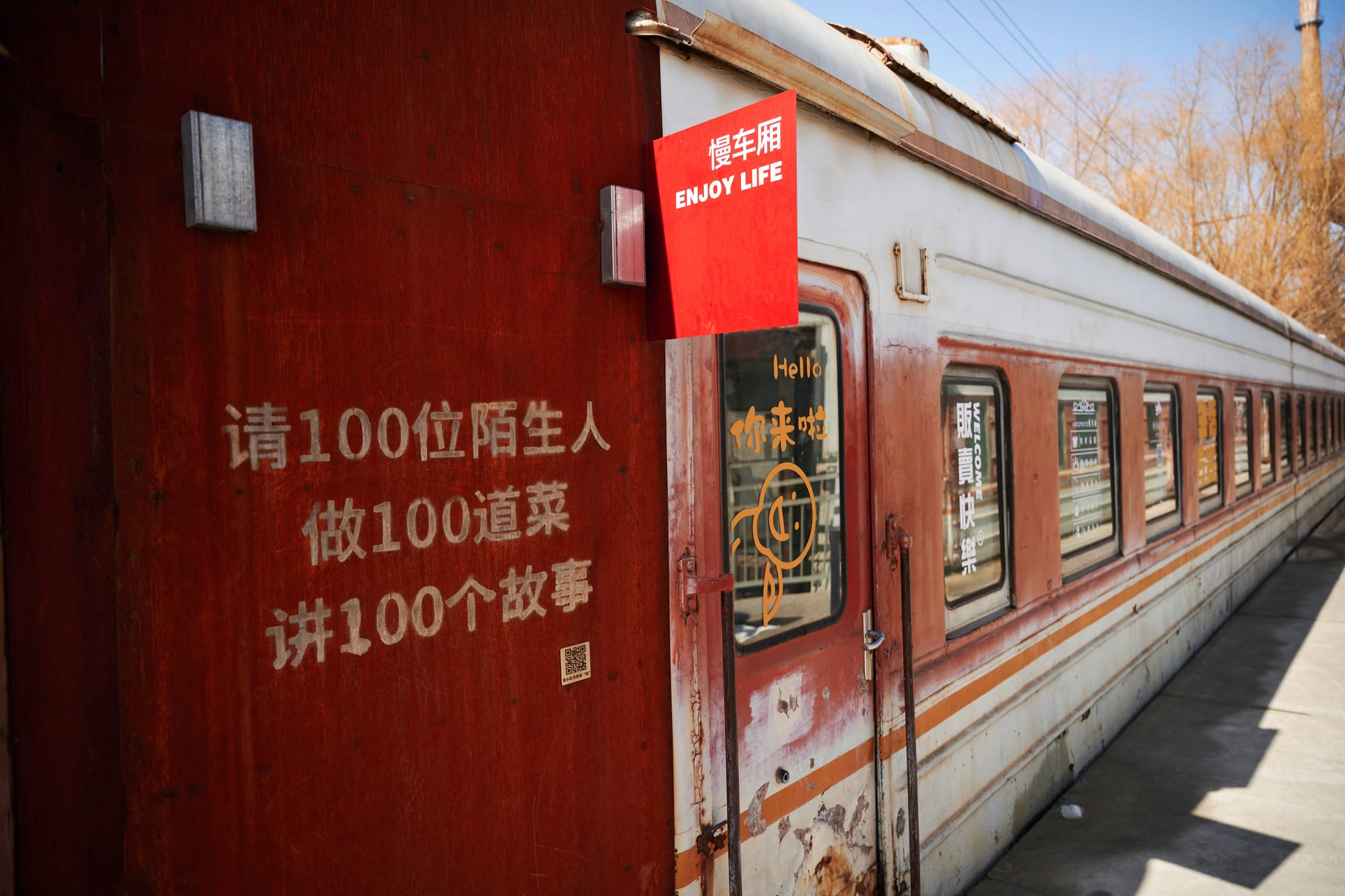
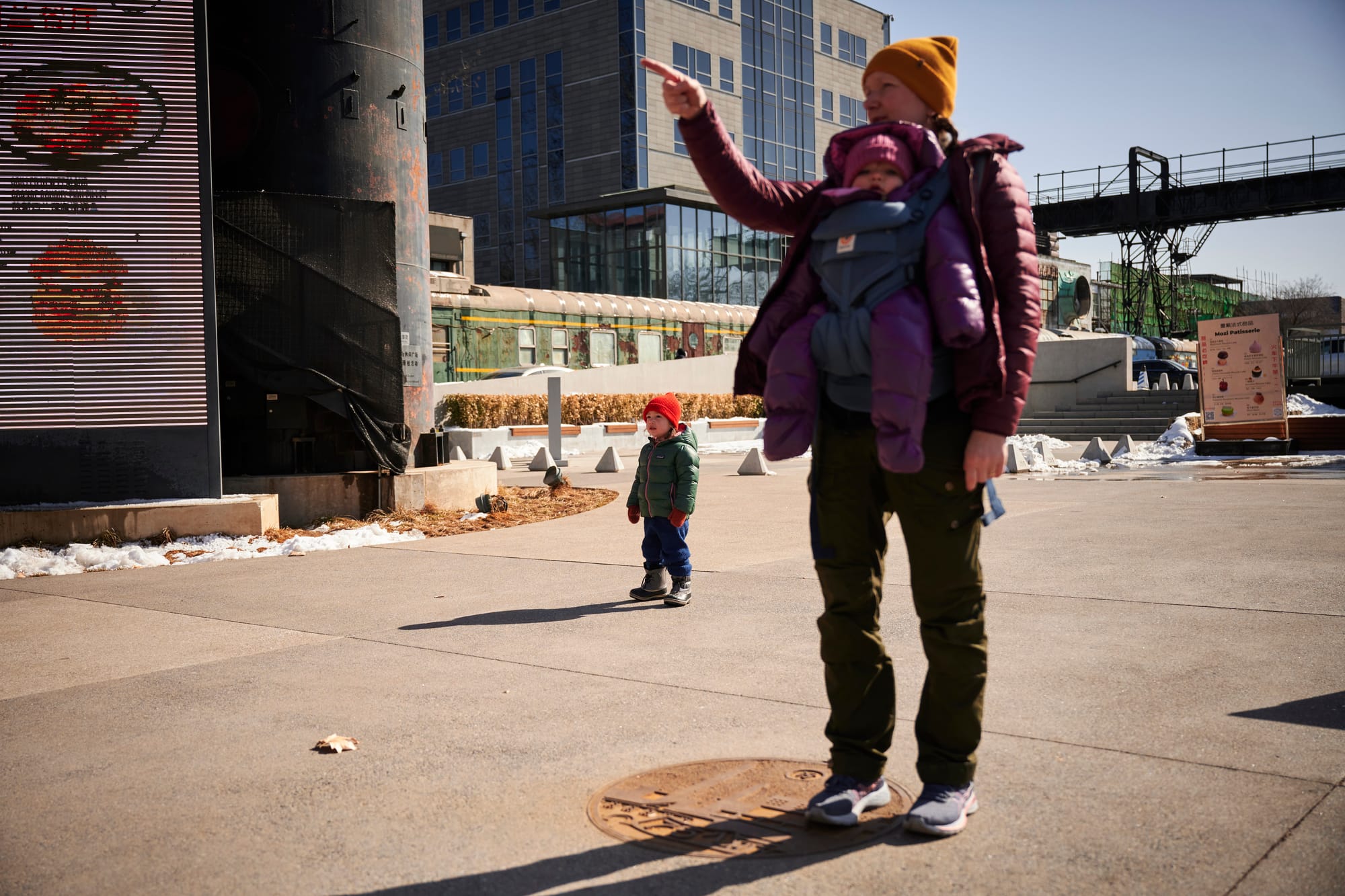
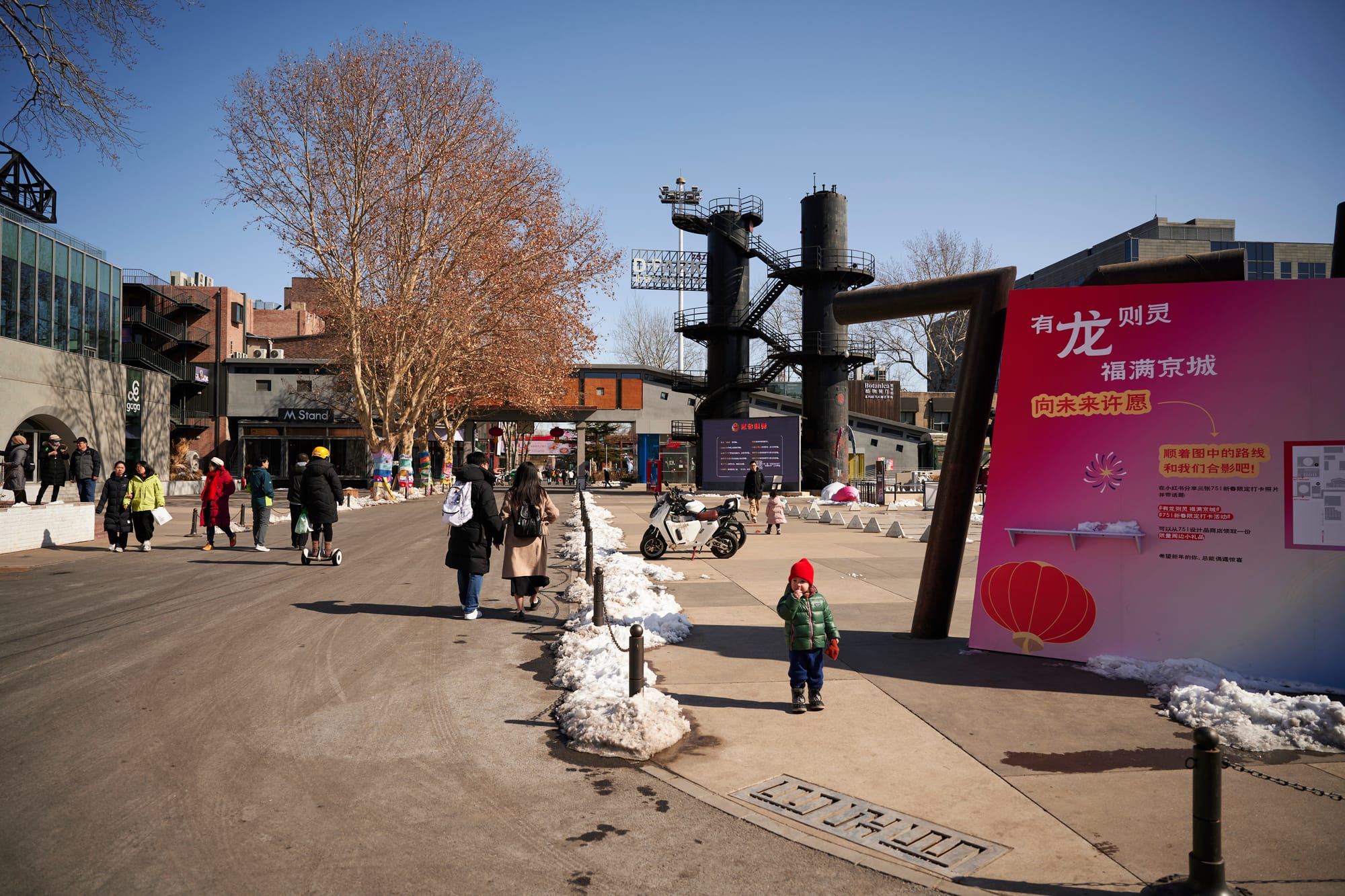
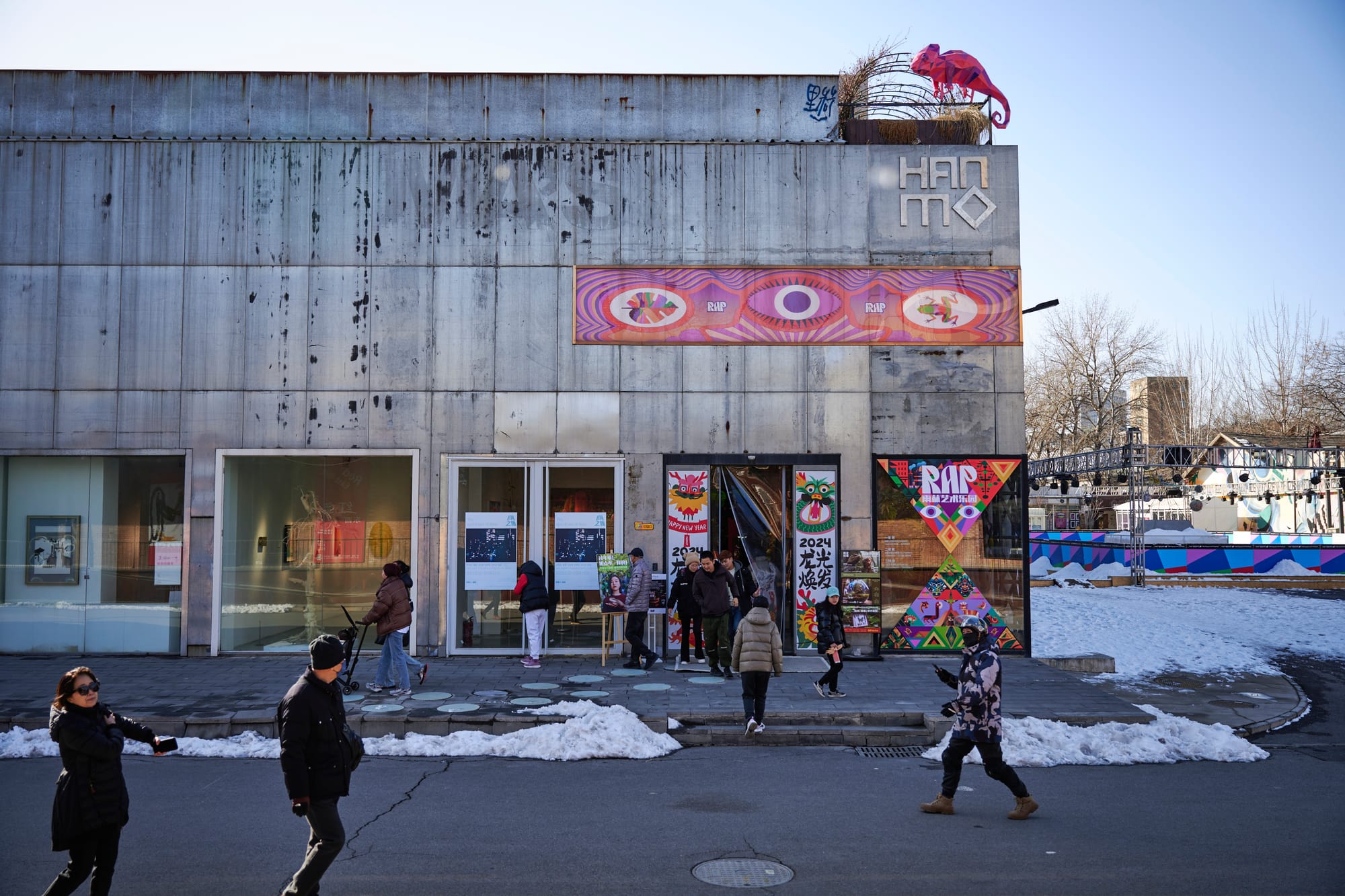
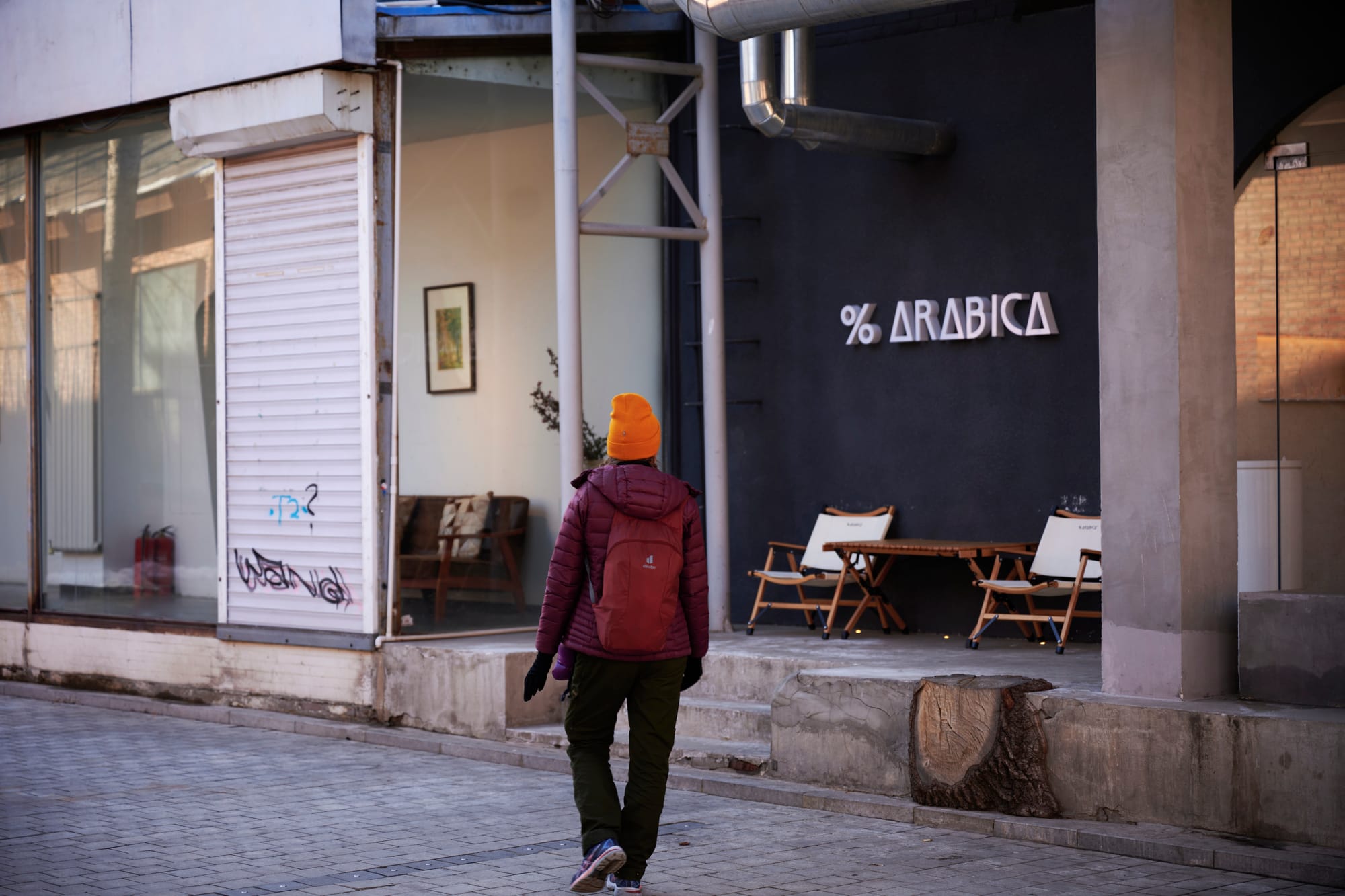
Red Brick Art Museum
Located northeast of the city, this museum is a masterpiece in itself. Its striking red-brick labyrinth and mirror-like pools create a photogenic backdrop even before you step inside. Exhibits focus on contemporary Chinese and international art, and the surrounding garden feels surprisingly tranquil.
Getting there: It’s a bit outside the city center, so grab a Didi or plan it as part of a half-day trip.

Beijing City Library
We were absolutely blown away by the Beijing City library - it is like any other public space that I have ever seen. Its beautiful spacious design encourages you to stay in and think how amazing it would be to live there and spend sunday afternoons with a book there...
It is relatively close to the 798 Art District, so you can easily combine those in one day!

China National Film Museum
One of our favourite museums we visited, is an immersive experience for the whole family. It‘s main hall is surrounded by mesmerising screens displaying different landscapes and themes, and the exhibitions allow you to learn about history of Chinese films, which you (like us) probably know little about. Highly recommended!
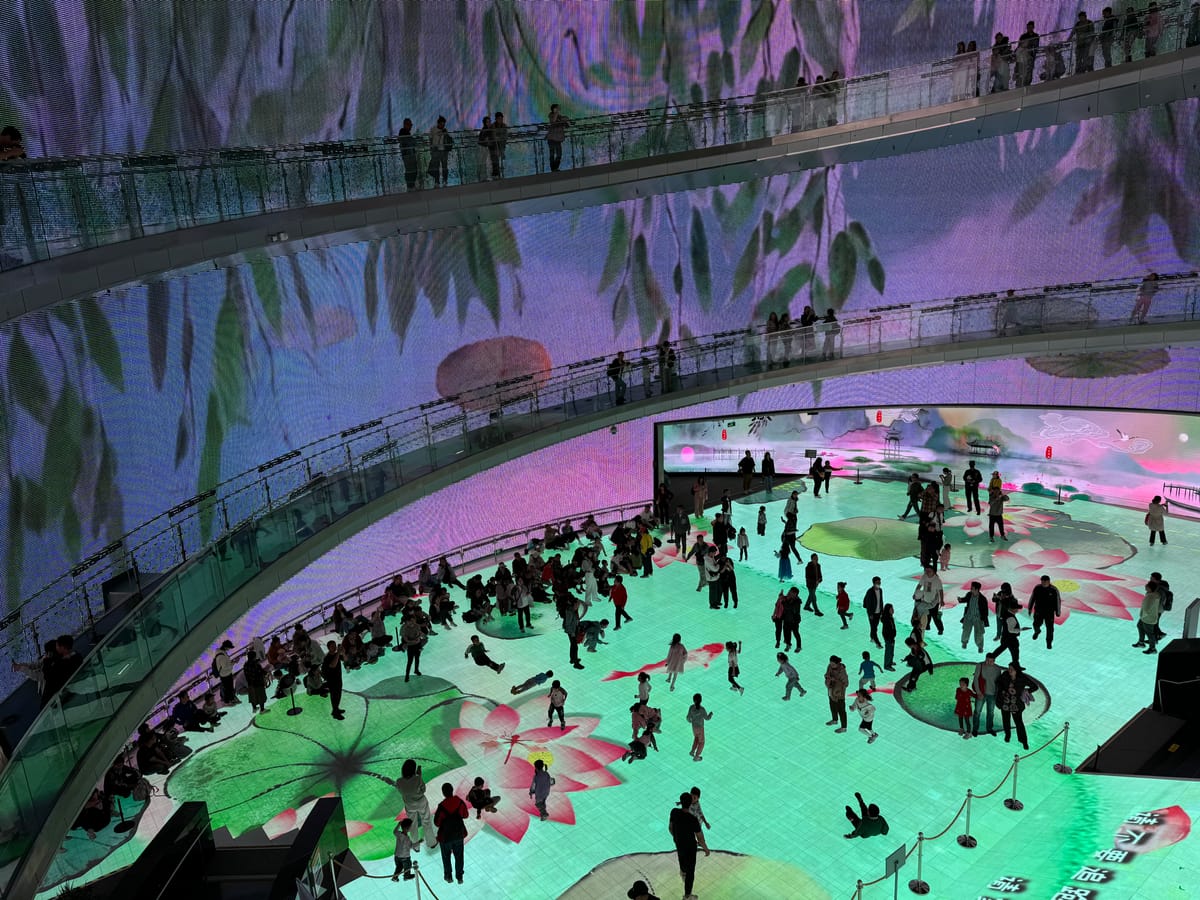
Parks, Gardens and Local Leisure
Morning in Parks
If you only do one “local experience” in Beijing, make it an early morning park visit. Between 6–8 a.m., you’ll see ballroom dancers, tai chi groups, musicians, and grandparents watching kids play. It’s joyful, communal, and unforgettable — a side of Beijing guidebooks often miss.
Beihai Park and Houhai Lake
I feel like we might be a bit too enthusiastic about the Houhai Lake but that is probably because it was the place we spent out first evening of our first trip to China.
It was the first encounter of the happy, vibrant night life of Beijing. In the summer the place has plenty of street food joints and bars to go to.
In a typical Chinese manner people, young and old, can be seen dancing and generally just enjoying themselves.
You will definitely enjoy just hanging around there and talking to people that might come up to you and try to start a conversation.
Houhai lake is quiet and relaxed during the day, and vibrant and loud in the evening.
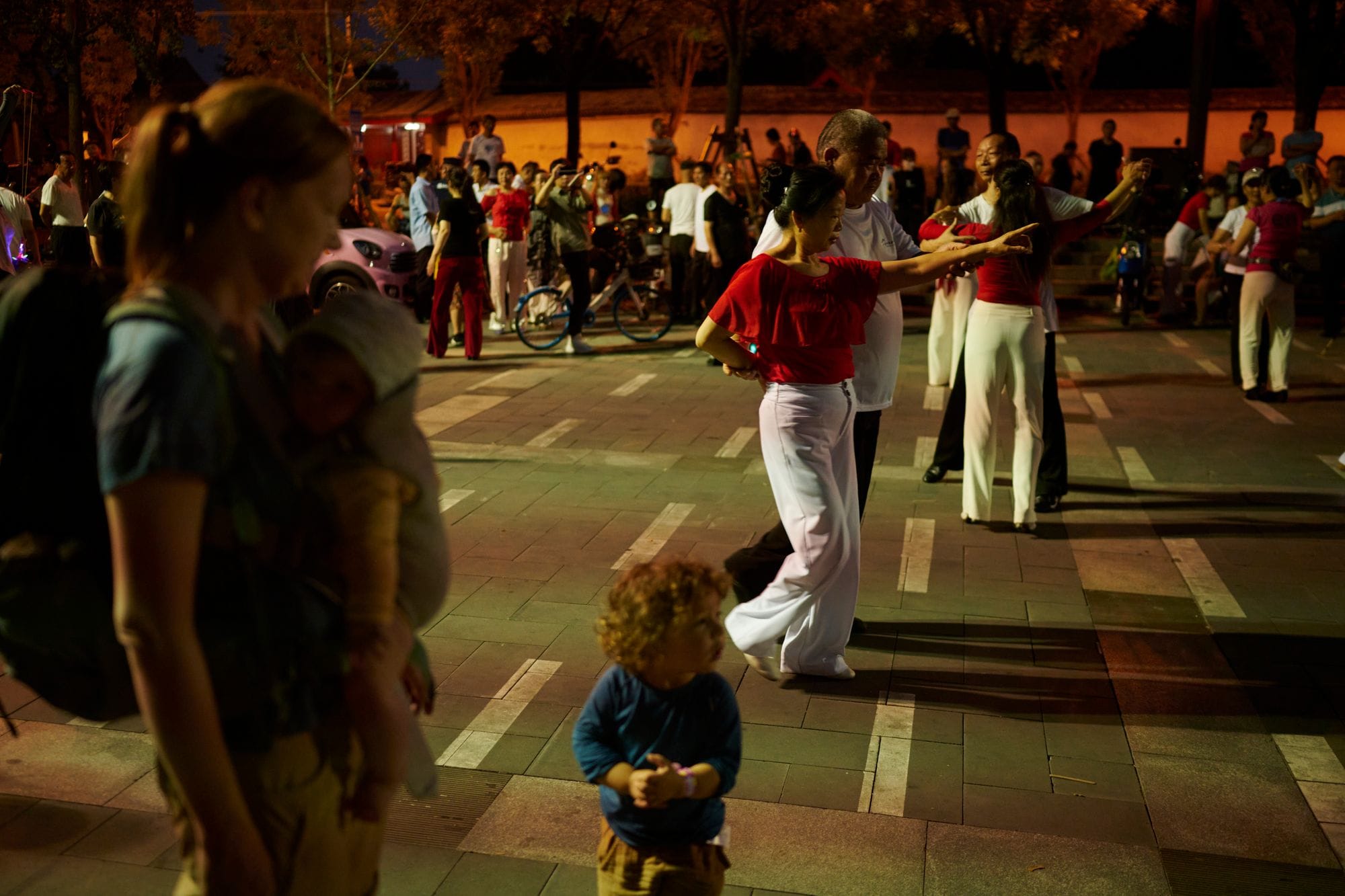
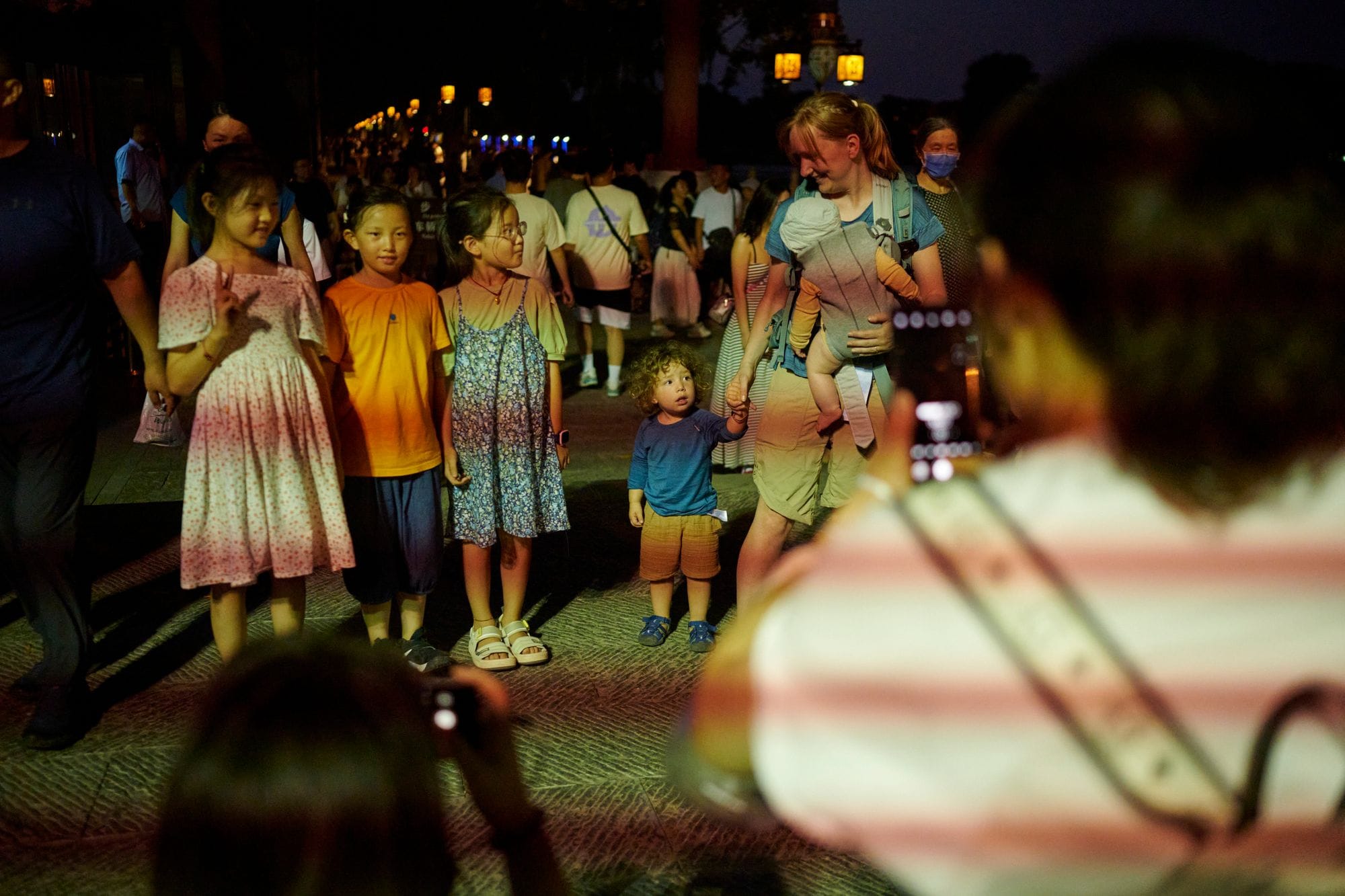
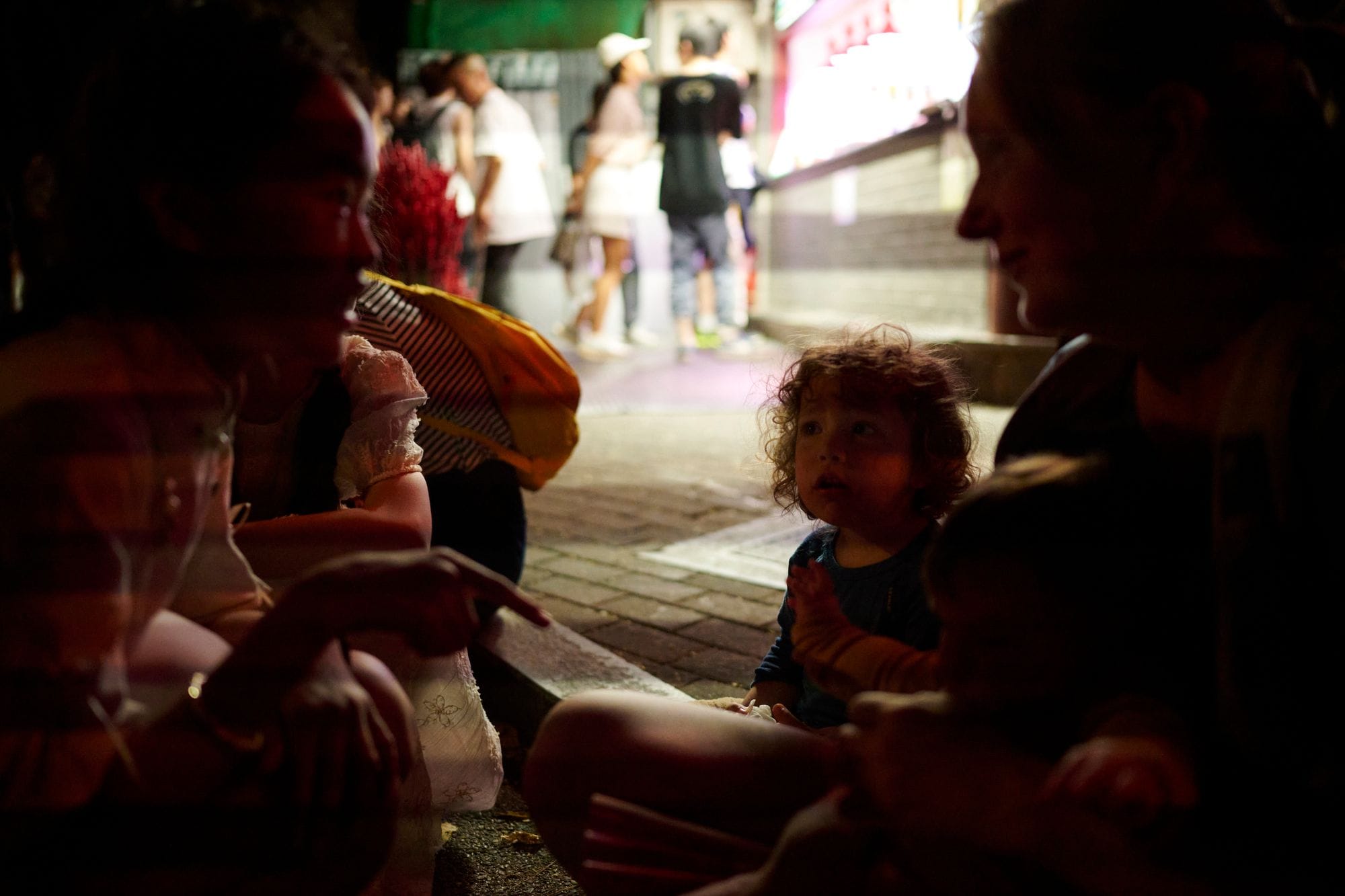
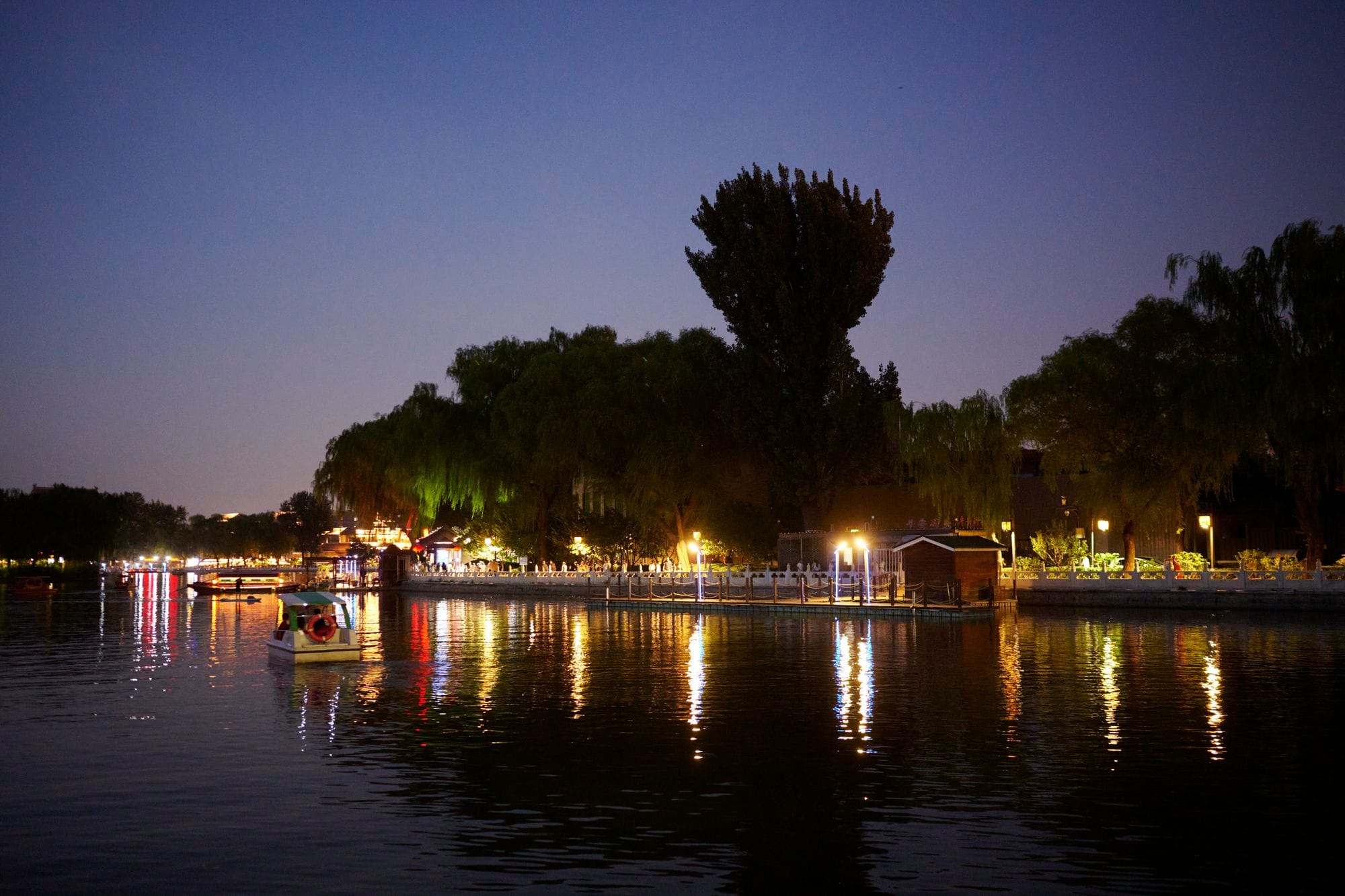
Chaoyang Park
Sprawling, modern, and full of life, Chaoyang Park is Beijing’s answer to Central Park. Locals jog around the lake, kids ride colorful rental cars, and families gather for weekend picnics. There’s even a small amusement area, cafés, and open-air concerts in summer.
Why go: It’s a great place to experience everyday Beijing — young families, rollerbladers, kite flyers, and street musicians all share the space.
Tip: Bring snacks and spend a lazy afternoon people-watching by the lake, especially on weekends when the park is buzzing.
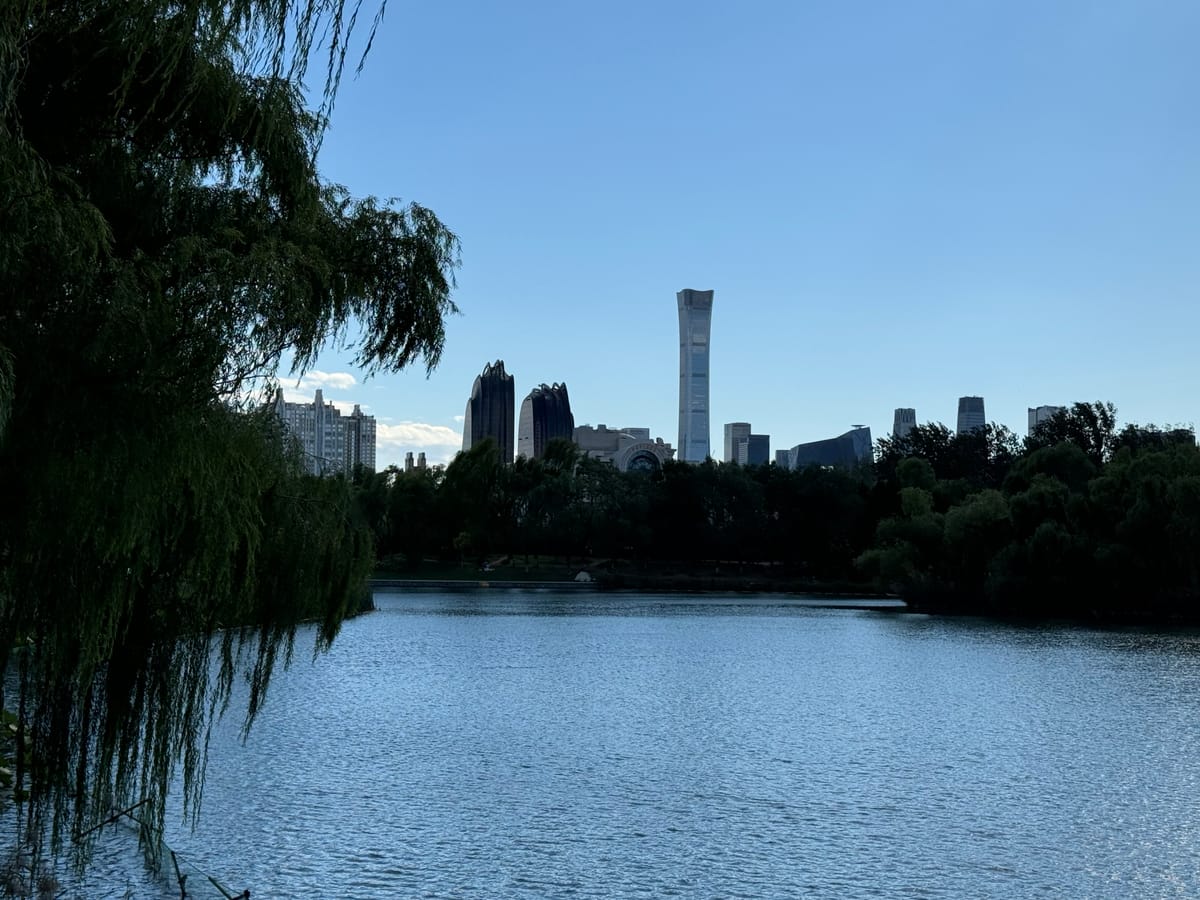
Olympic Park
Built for the 2008 Olympics, this huge green space in the north of the city is perfect for walking, cycling, or a quick city escape. There are lakes, running tracks, and peaceful corners — ideal if you need a break from sightseeing crowds.
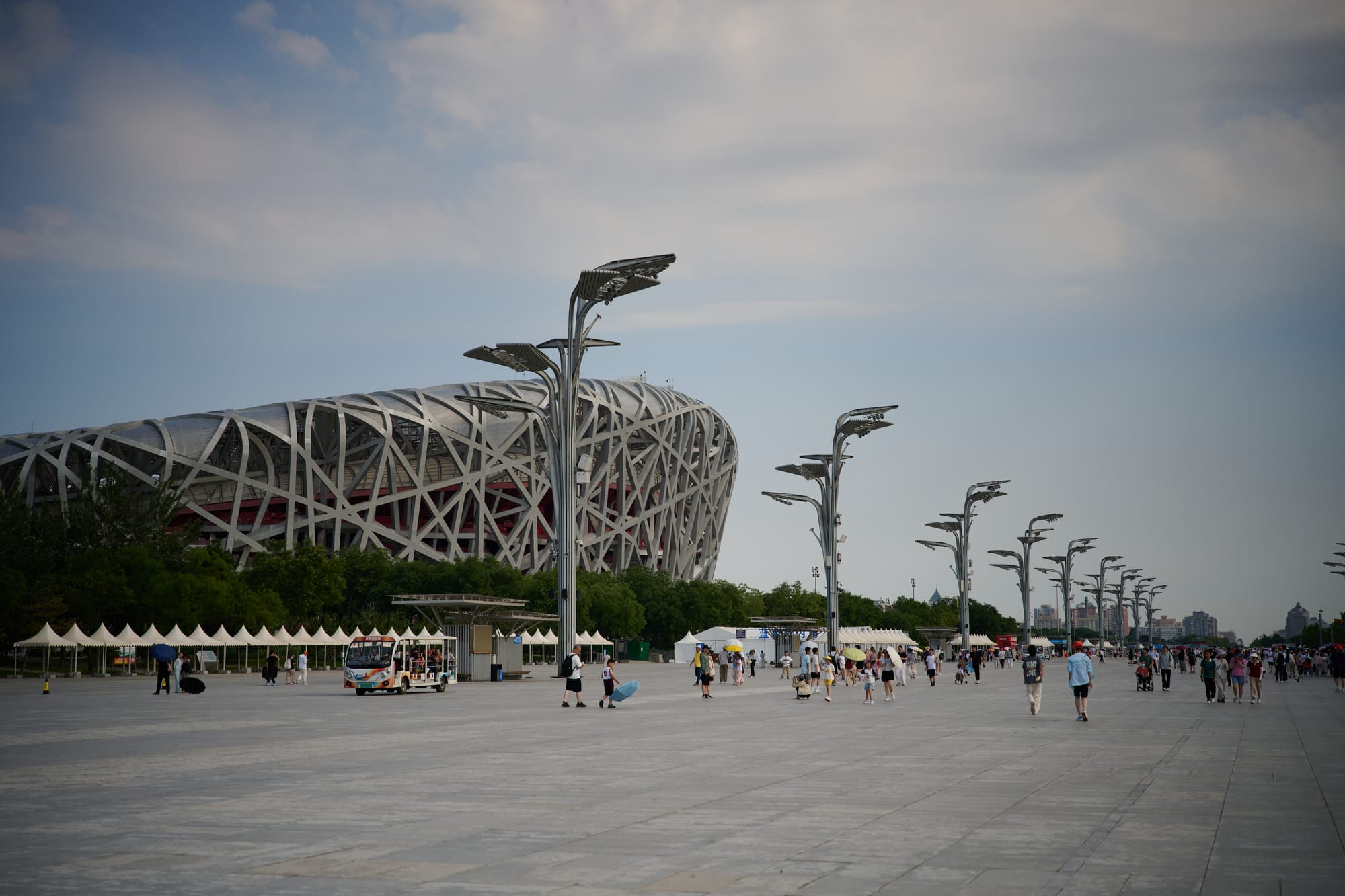
Ritan Park
Tucked in the embassy district, Ritan Park is one of Beijing’s oldest altar parks, once used for rituals dedicated to the sun. Today, it’s a peaceful neighborhood retreat with winding paths, rock gardens, and ponds full of koi fish.
Local vibe: Retirees play cards under the trees, young professionals come for lunchtime strolls, and expats picnic on the lawns. There’s even a small café by the east gate — a perfect stop after a morning walk.
Tip: Visit at golden hour to catch the light falling over the pavilions.
Temples, Architecture and Hidden Corners
Beijing’s temples aren’t just religious sites — they’re oases of calm and windows into the city’s layered history. Each one tells a different story about the beliefs and philosophy that shaped China.
Lama Temple (Yonghe Gong)
The most famous temple in Beijing, Lama Temple combines Tibetan and Han Chinese Buddhist styles. Its incense-filled courtyards and towering statues make it a must-see.
Tip: Go early to experience the morning prayers and skip tour groups. Dress modestly and move clockwise through the halls as locals do.
Confucius Temple & Imperial College
Just down the street from Lama Temple, this complex honors China’s greatest philosopher. It’s quieter and more reflective — stone tablets engraved with the names of ancient scholars line peaceful courtyards shaded by cypress trees.
Good to know: The adjoining Guozijian (Imperial College) was the top academic institution of imperial China.
Fayuan Temple
One of the oldest temples in Beijing, Fayuan Temple has a timeless serenity that contrasts with the city’s noise. Monks still live and chant here, and visitors are few. If you’re craving peace, this is the spot.
Hidden Corners
Seek out White Cloud Temple (Baiyun Guan) if you’re curious about Taoism, or Zhihua Temple for hauntingly beautiful Ming-era music performances. Both are lesser-known and deeply atmospheric.
Beijing After Dark — Nightlife and Markets
When the sun sets, Beijing transforms. The streets fill with neon lights, sizzling food stalls, and locals relaxing after work. Whether you want a drink by the lake or a late-night snack, there’s something for every mood.
Houhai Lake
In the evening, the lakes around Houhai glow with lanterns and reflections. Grab a cocktail or tea in one of the lakeside bars, or just stroll and enjoy live music drifting from open doors.
Tip: Visit around sunset for photos, then stay after dark for the relaxed nightlife vibe.
Sanlitun
Beijing’s modern nightlife district, Sanlitun is full of rooftop bars, international restaurants, and boutique shops. It’s lively but stylish — the place to go if you want a taste of cosmopolitan Beijing.
Wangfujing Snack Street
A must for adventurous eaters, this market near Tian’anmen Square offers all kinds of street snacks — from candied fruit to fried scorpions. It’s a bit touristy but fun for a quick evening wander and photos.
Pro tip: For better food, skip the gimmicky stalls and explore side streets for dumplings and noodles.
Skyline near CCTV tower
Whether the CCTV building - locally known as Da Kucha (大裤衩, Big Pants) - is cool or cringe is debatable, it is one of the landmarks of Beijing. It is located in the financial district and surrounded by other high rise buildings where you can admire the Beijing skyline.
One of the places where you can do it from is China World Mall - an enormous modern shopping mall with a viewing terrace where you can take some pictures of the famous building. The shopping centre itself is worth a visit if you haven't been to any shopping malls in China yet. Walking around high-end shops in China makes you understand that in China future is already there.
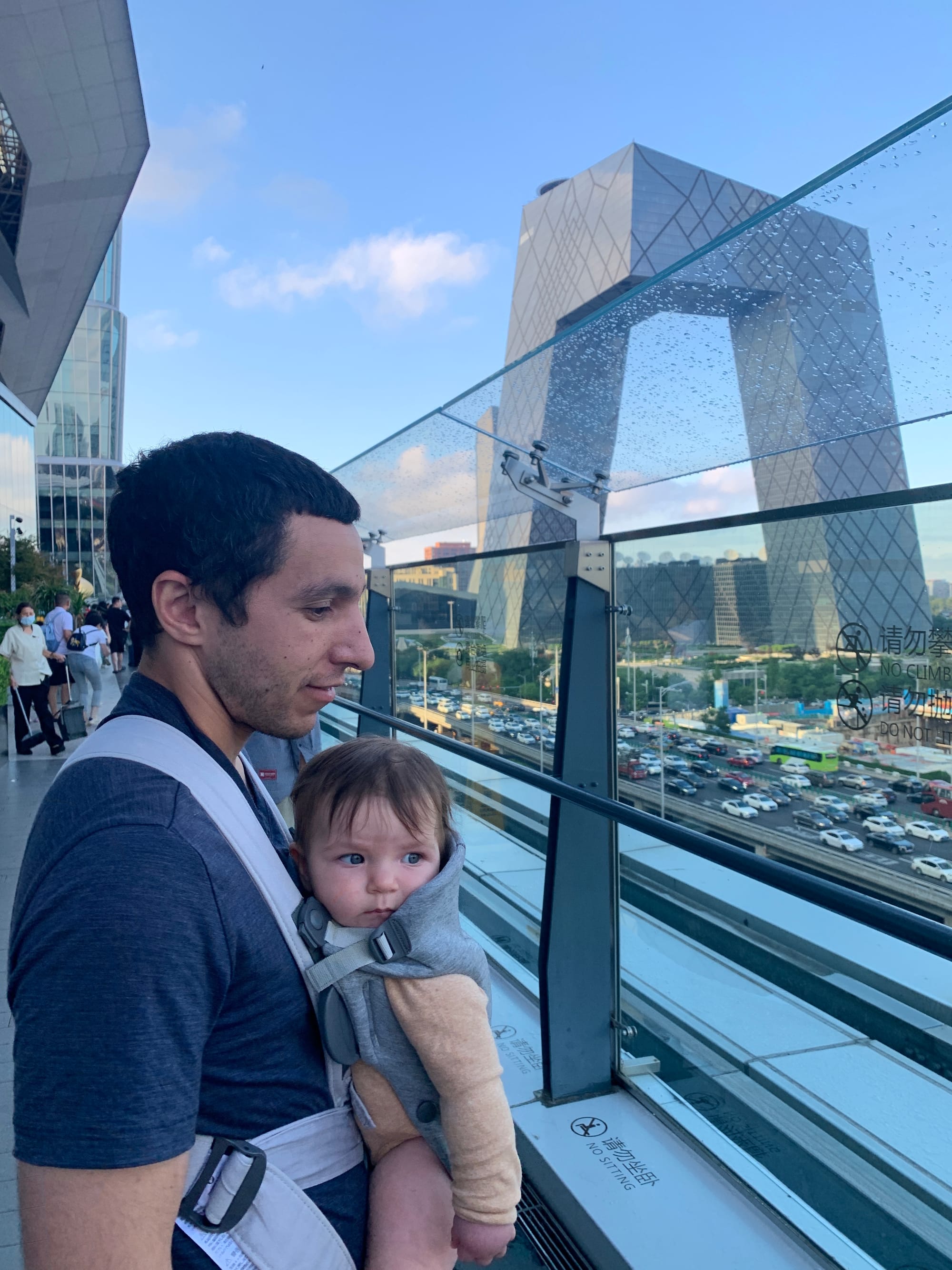
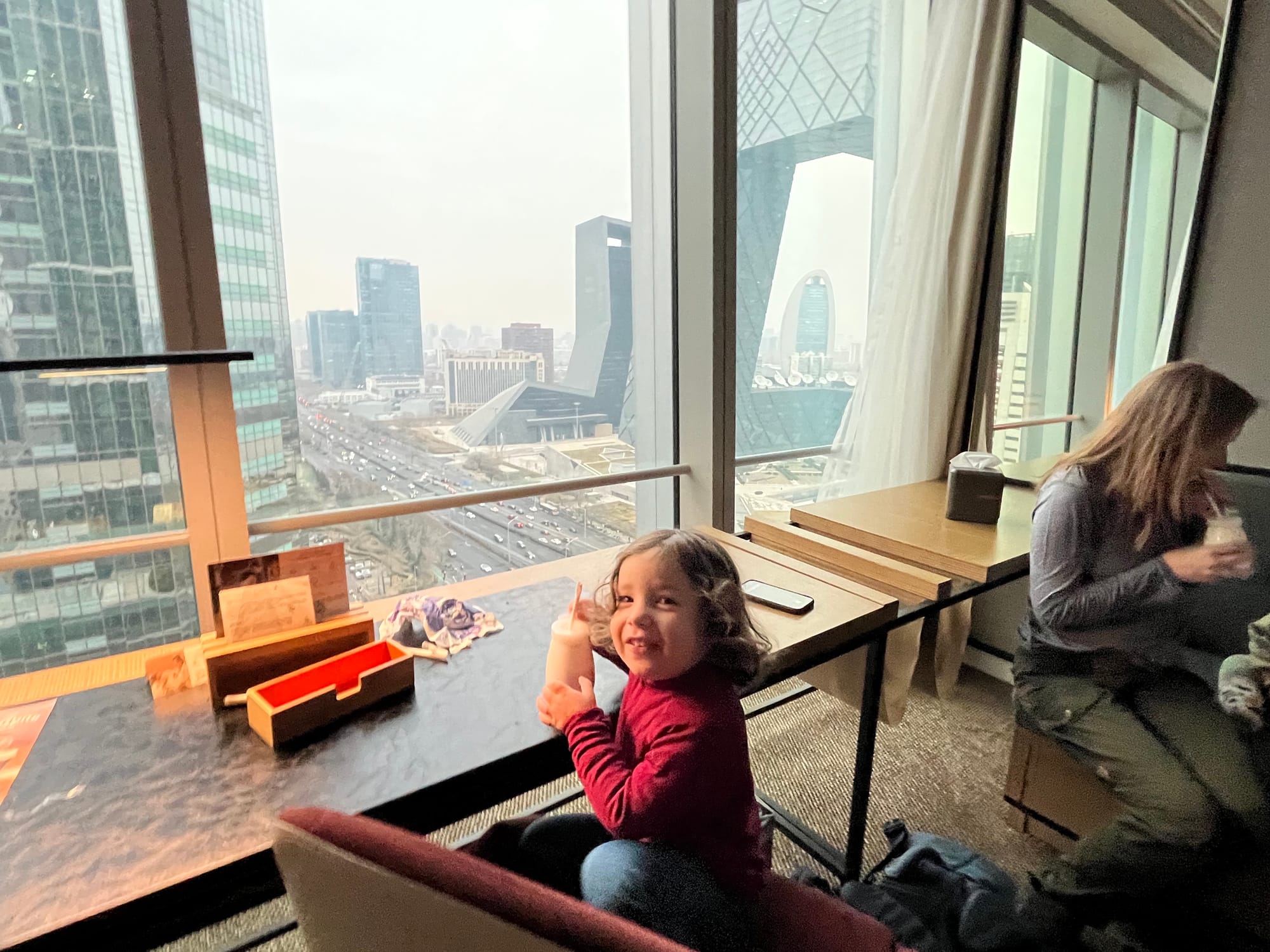
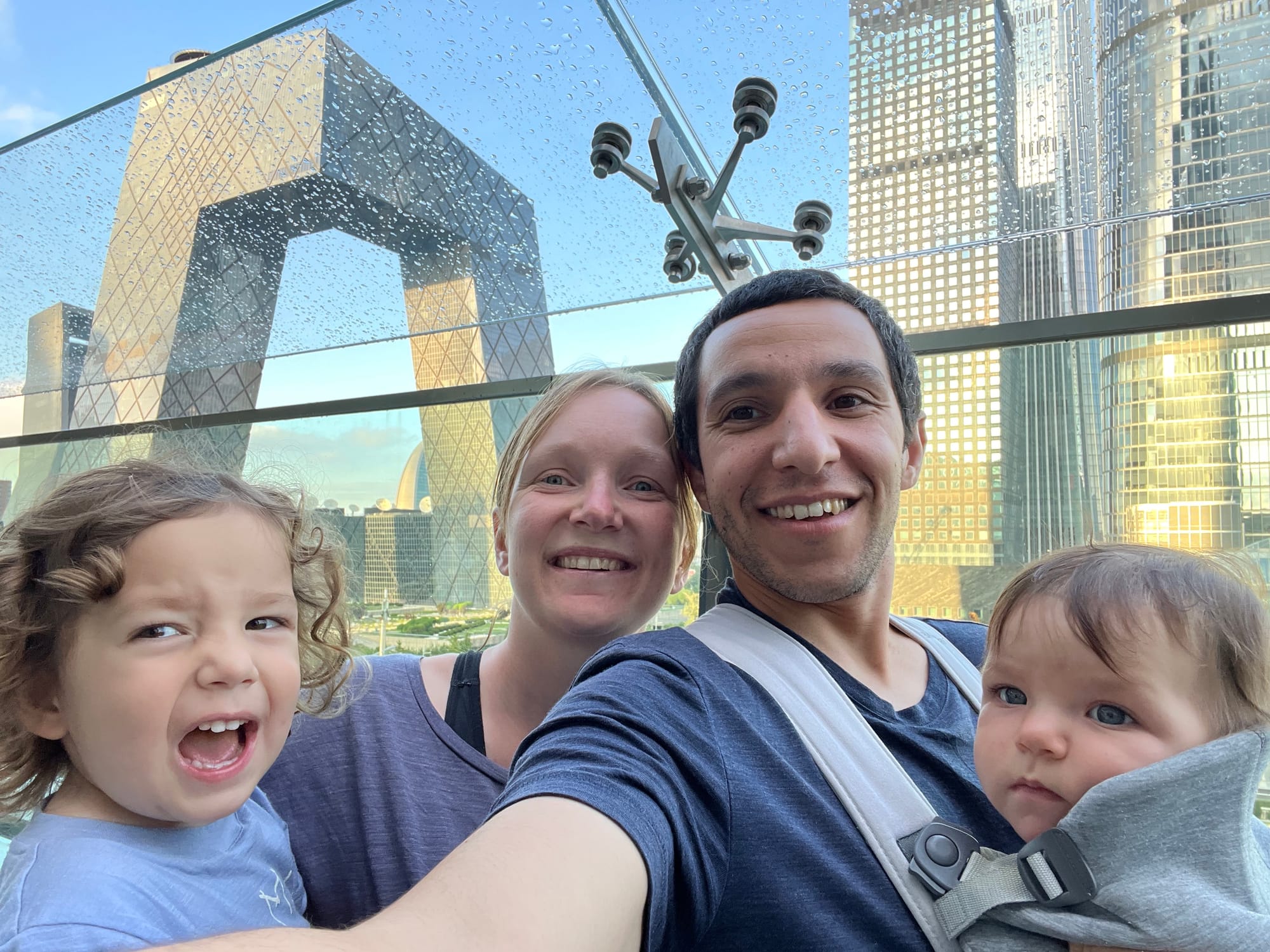
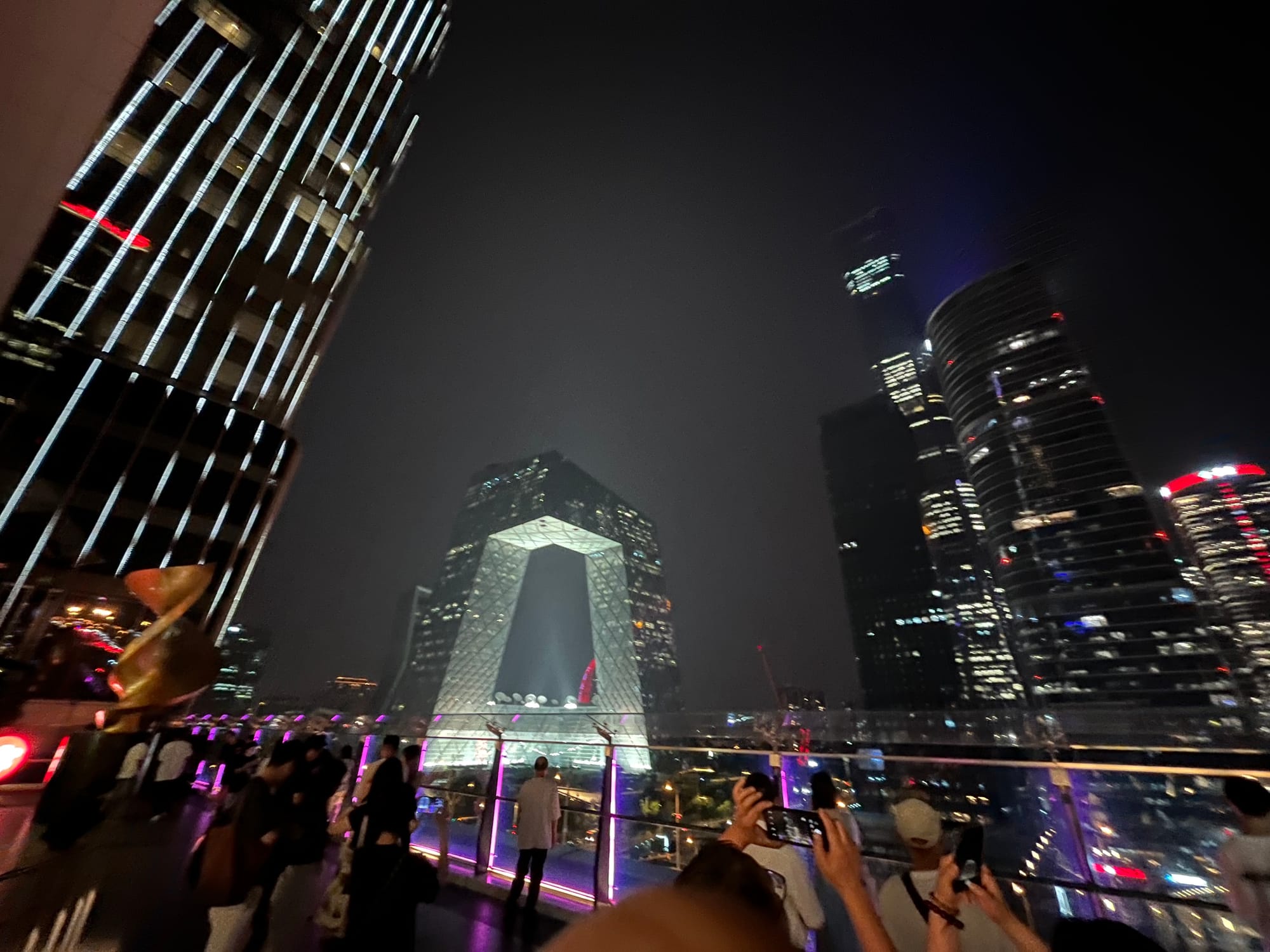
Top Recommendation: Jianbing and Beer at Peiping Machine Brewery
A modern take on the city‘s old classic — enjoy a cold beer and Jianbing pancakes at the Peiping Machine Brewery, a hangout beloved by hip locals and expats alike.
We have seen this brewery in some China vlog and it took us a while to find it, and we glad we did.
There are multiple locations across the city, we went to Youyi branch close to Ritan Park — I recommend finishing (or starting) your evening there as it is a very cool park!
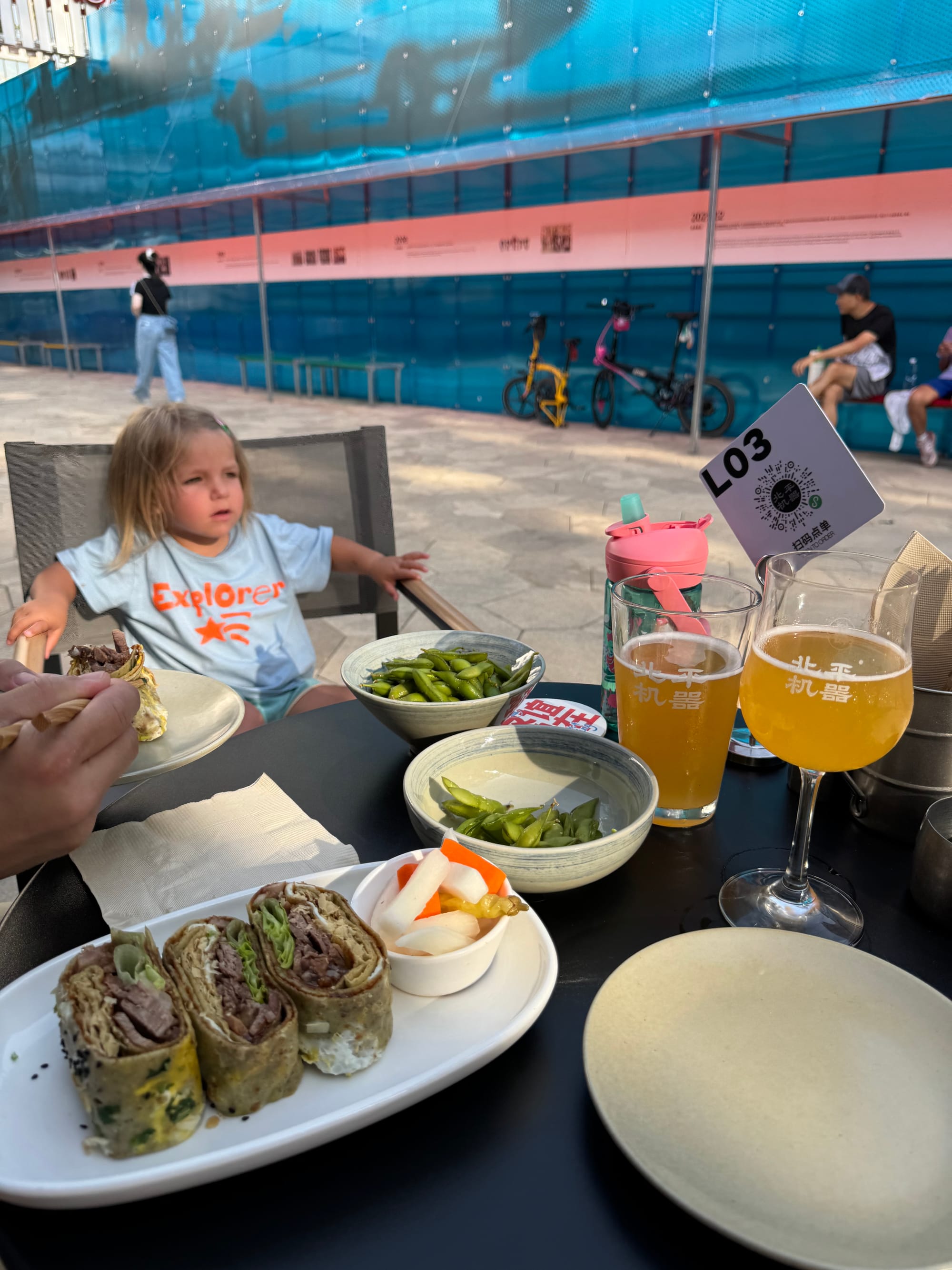
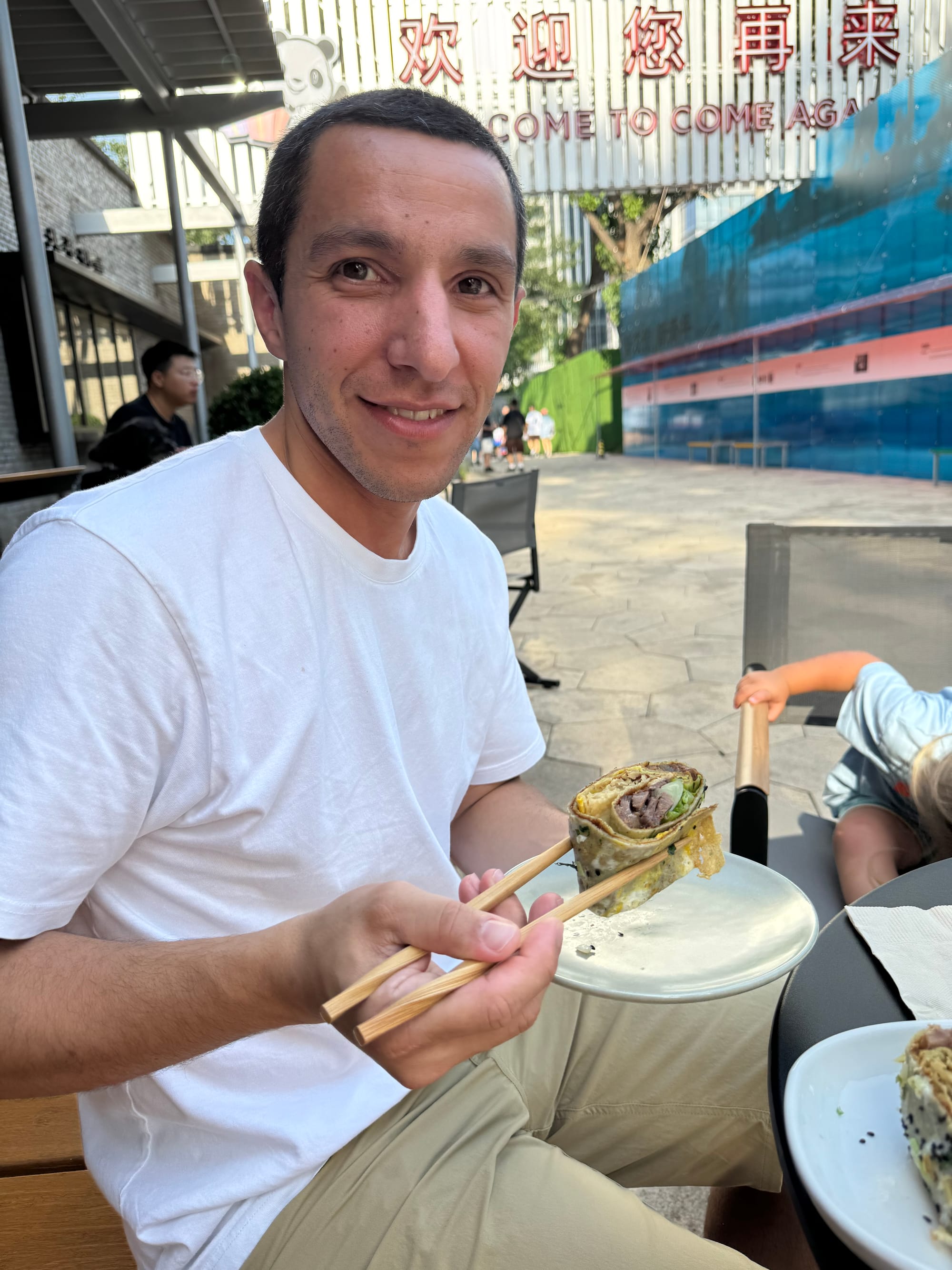
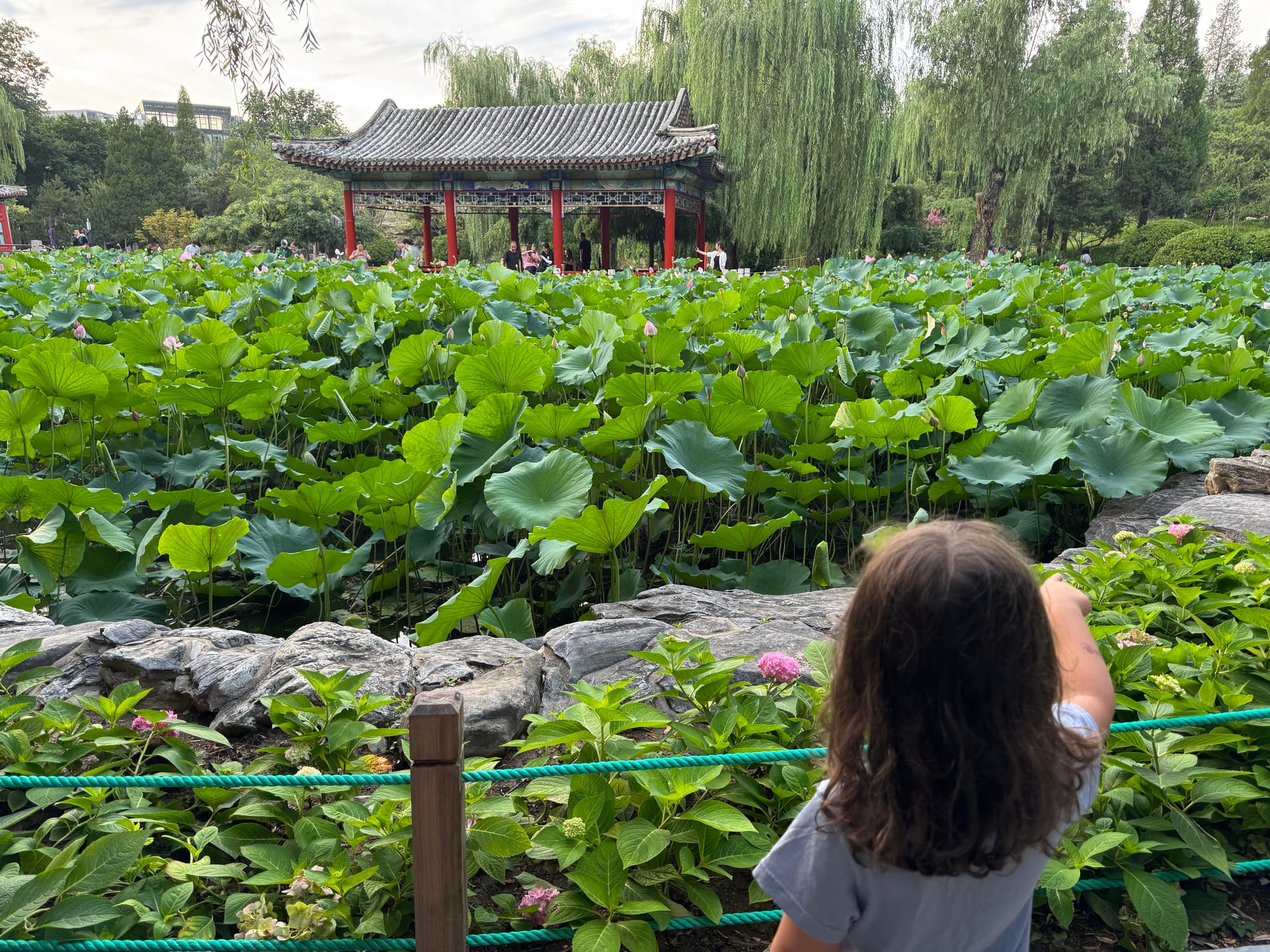
Food Experiences You Can’t Miss
Beijing is a city that loves food — from imperial banquets to hole-in-the-wall noodle shops. Here’s what you shouldn’t leave without tasting.
Peking Duck
The city’s signature dish and a true culinary experience. The crispy skin, tender meat, and paper-thin pancakes are perfection when eaten right.
Jianbing (Chinese Crepes)
A classic Beijing breakfast — a crisp, savory crepe filled with egg, herbs, chili sauce, and crunchy wonton. Found on nearly every corner in the morning.
Tip: Try one from a small street vendor near a subway exit for the most authentic flavor.
Hotpot & Noodles
For a hearty meal, try Haidilao hotpot (famous for its service) or explore small noodle shops serving zhajiangmian — Beijing-style noodles with soybean paste and cucumber.
Local Markets
Visit Sanyuanli Market for a look at Beijing’s fresh produce scene or Panjiayuan Flea Market for antiques and snacks. Great places to mingle with locals and pick up souvenirs.
Tea Houses & Cafés
Modern Beijing has embraced coffee culture. Try minimalist cafés in the hutongs or a traditional tea house near Beihai Park to slow down between sightseeing.
The Great Wall — The Ultimate Beijing Day Trip
No trip to Beijing is complete without seeing the Great Wall of China — but choosing the right section makes all the difference.
Mutianyu
Beautifully restored, easy to access, and less crowded than Badaling. You can take a cable car up, walk along the wall, and ride a toboggan down (fun and scenic).
Tip: Go early and allow 3–4 hours for a relaxed visit.
Badaling
The most famous — and busiest — section. It’s fully restored and accessible, ideal for those short on time or traveling with elderly family members.
Jinshanling
A mix of restored and wild wall, Jinshanling offers some of the most photogenic views. It’s about 2.5 hours from the city but worth the journey if you want fewer people and dramatic landscapes.
Simatai
The only section open at night. Great for adventure-seekers and photographers — you can even combine it with a stay at Gubei Water Town for a unique overnight trip.
Getting there:
You can reach Mutianyu and Badaling easily via tours or private transfers (link to your affiliate here), or rent a car with a driver for Jinshanling/Simatai. Bring snacks and plenty of water.
Practical Info for Visiting Beijing
Best Time to Visit
Spring (April–May) and autumn (September–October) have pleasant weather and clear skies. Summers are hot and humid; winters can be cold but atmospheric.
Getting Around
The subway is clean, cheap, and efficient. Taxis and Didi (China’s Uber) are easy to use, though traffic can be heavy. Always carry your destination in Chinese characters.
Money & Payments
Most locals use WeChat Pay or Alipay. Foreign cards now work with these apps, but cash is still accepted in major sights.
Language
English is limited outside main attractions. Download Pleco or Google Translate for help with menus and directions.
Tickets & Bookings
Many attractions now require real-name online booking. Bring your passport for entry.
Etiquette
Dress modestly for temples, avoid loud voices in sacred spaces, and be patient in queues — Beijing runs on rhythm and routine.
FAQs
Q: How many days do you need in Beijing?
A: Ideally 4–5 days to see the main sights without rushing — one full day for the Great Wall, two for central attractions, and one or two for hutongs and parks.
Q: Is Beijing expensive?
A: Not necessarily. Street food and public transport are affordable; only high-end hotels and Western restaurants push prices up.
Q: Can you visit the Great Wall in one day from Beijing?
A: Yes — Mutianyu and Badaling are perfect day trips, easily done with a tour or private driver.
Q: What’s the best way to get around?
A:The subway is fastest and easiest. Use Didi for shorter rides or when traveling with luggage.
Q: Is Beijing family-friendly?
A: Absolutely — parks, open spaces, and many attractions are kid-friendly. (You can link your “Beijing with Kids” post here.)
Q: Do I need a VPN?
A: Yes, if you plan to use local SIM card and rely on Google, WhatsApp, or Instagram. Install one before you arrive.
Q: Is tap water safe?
A: No, drink bottled or boiled water.
Final thoughts
There is much more to Beijing than the main tourist spots so before visiting, make sure to read abour lesser known, but equally amazing, spots.
And don't just take my word for it - your trip is your own adventure and while those are our personal favourites, there is plenty more to explore!
Read more:
